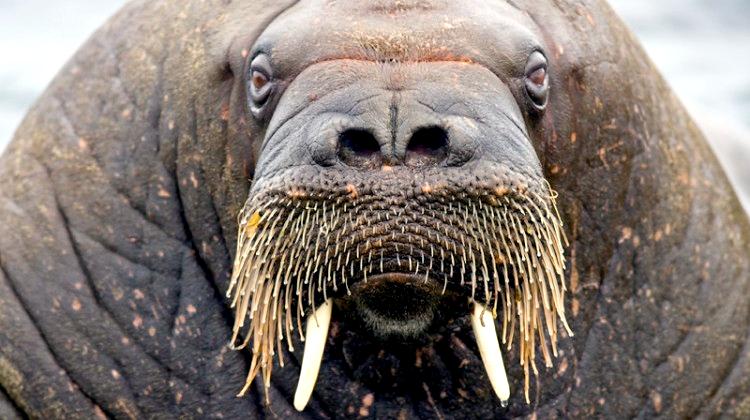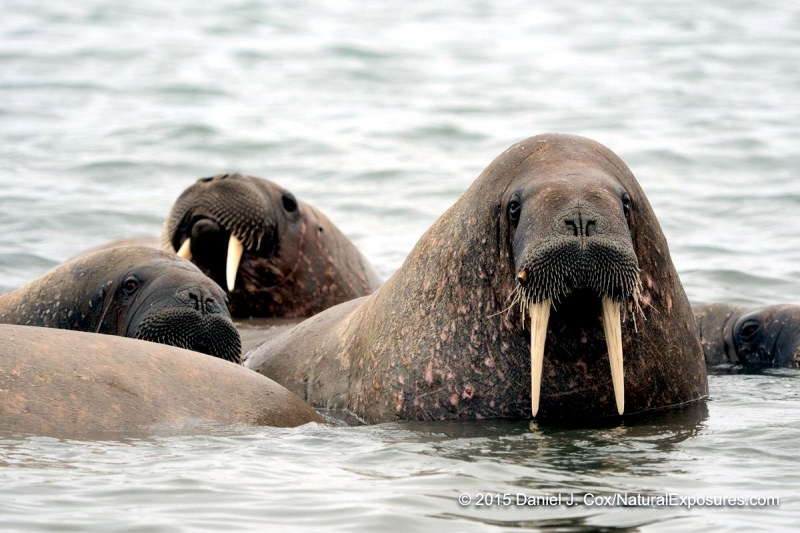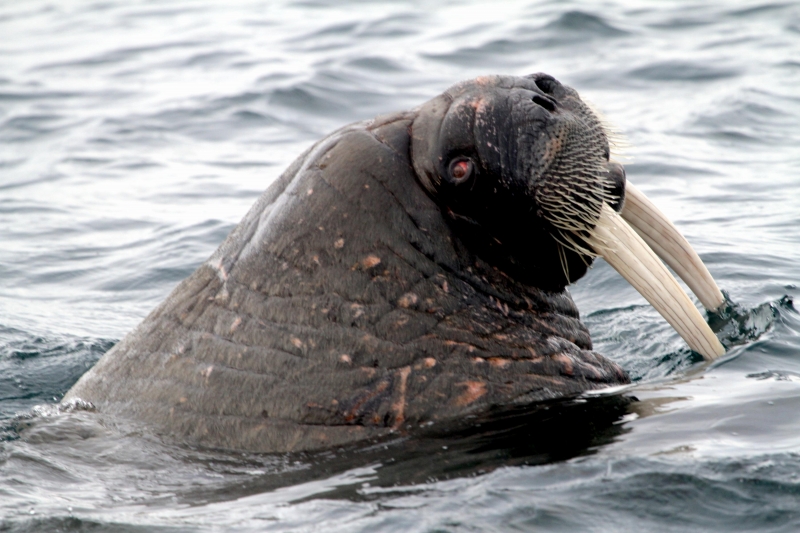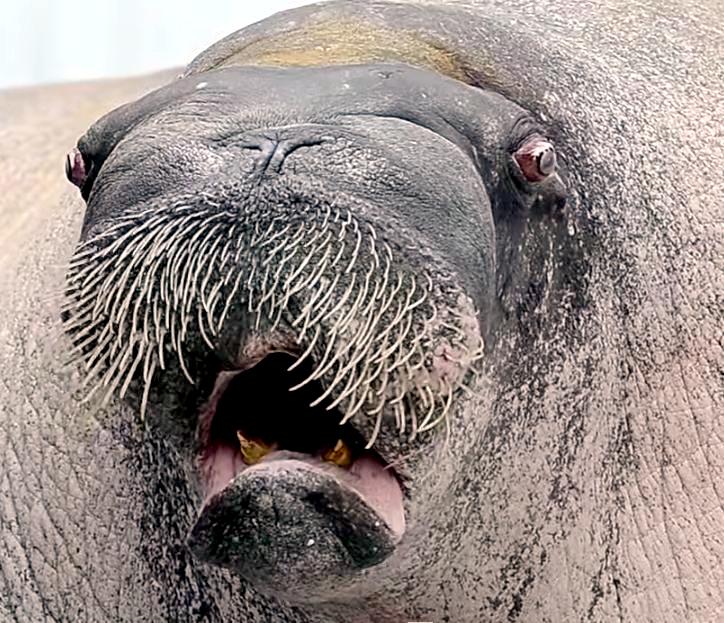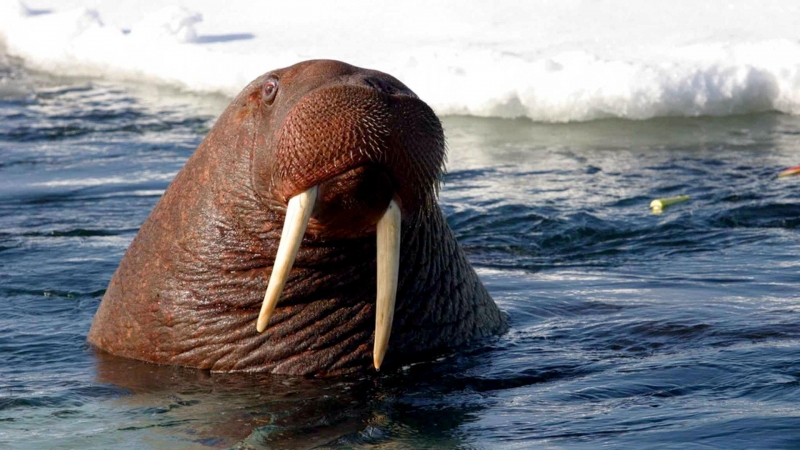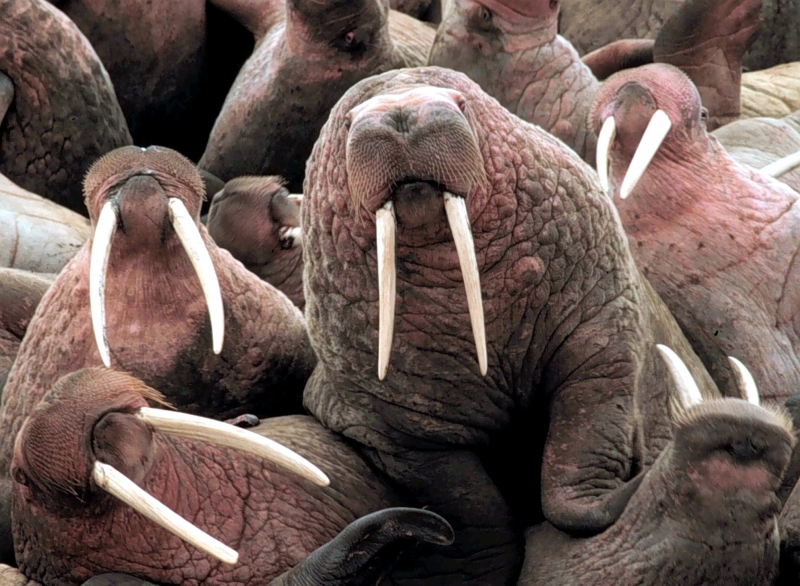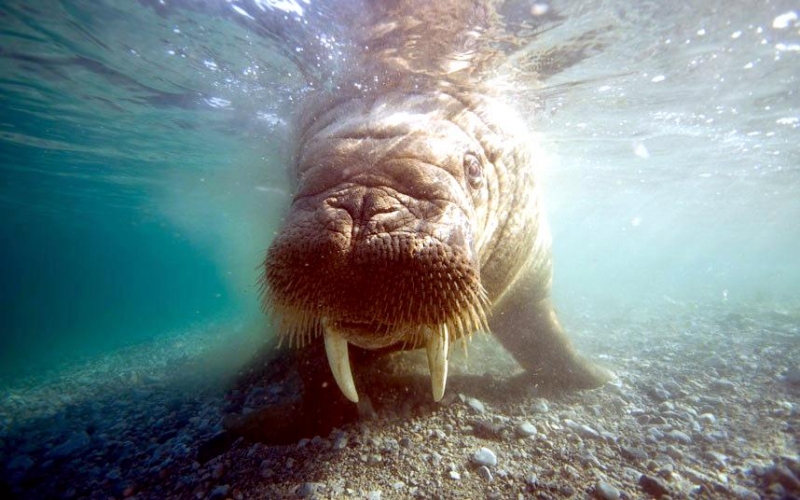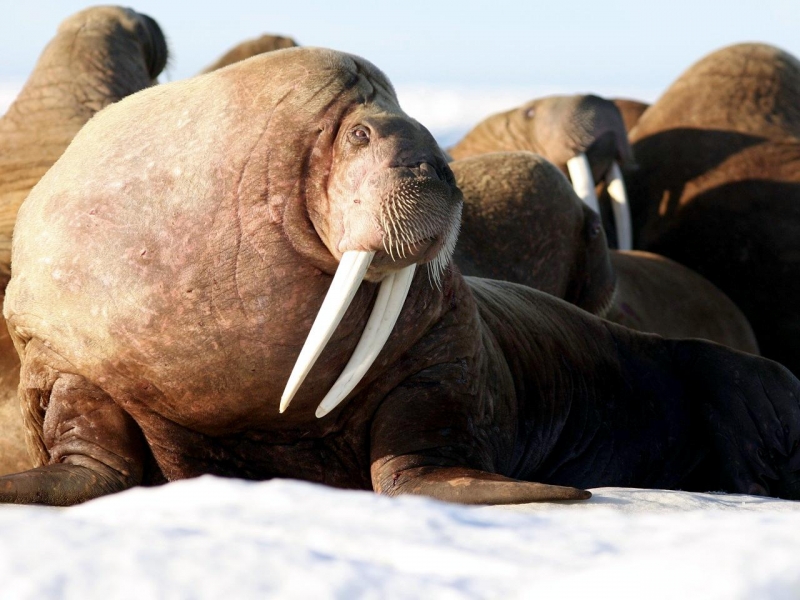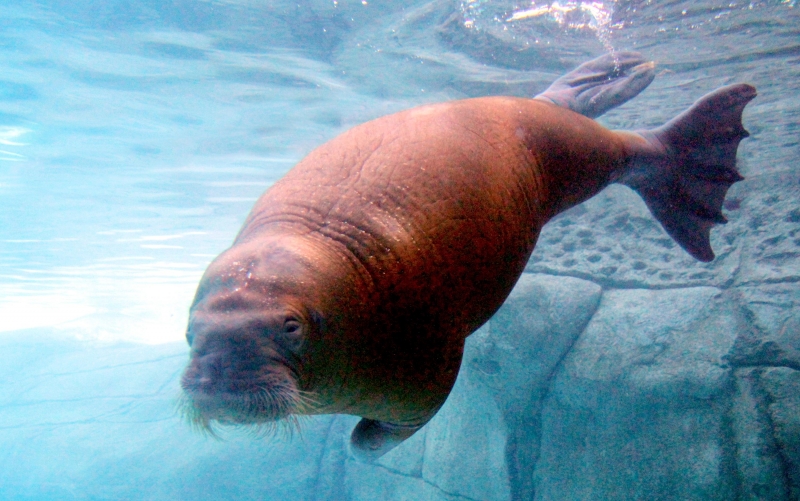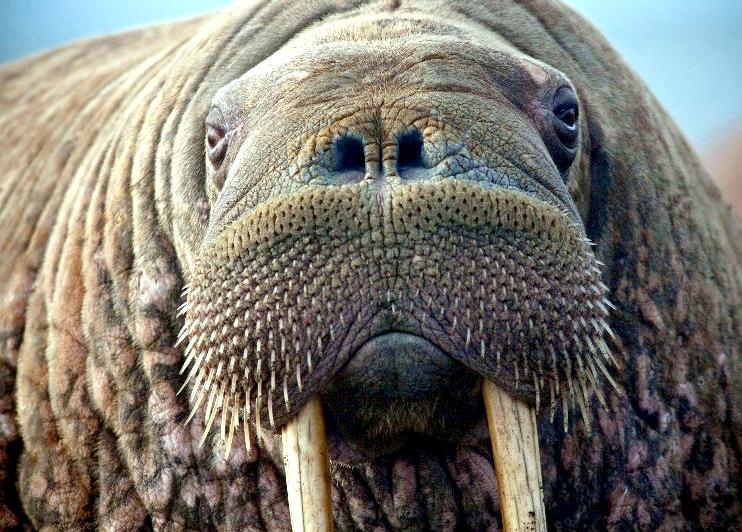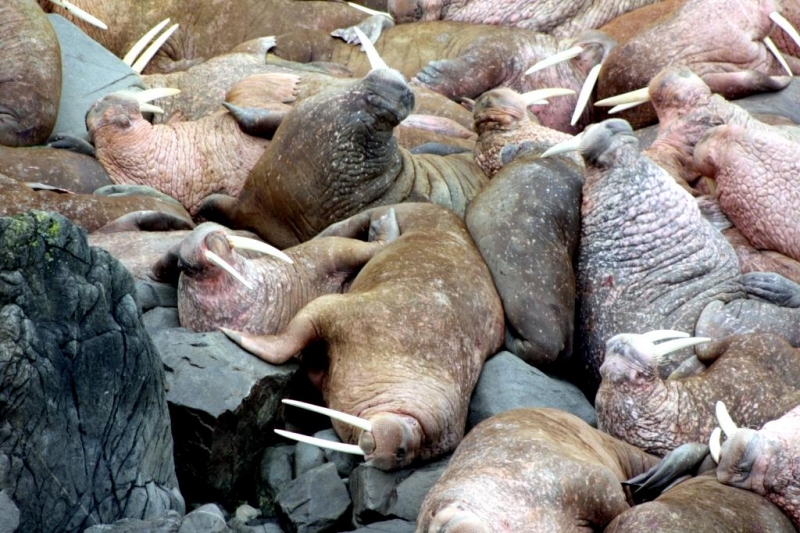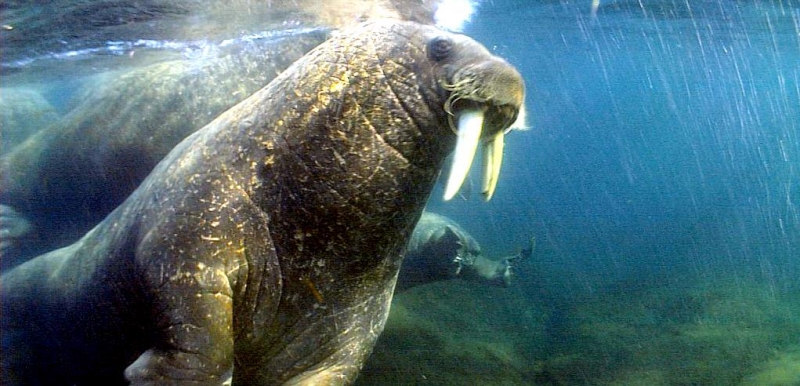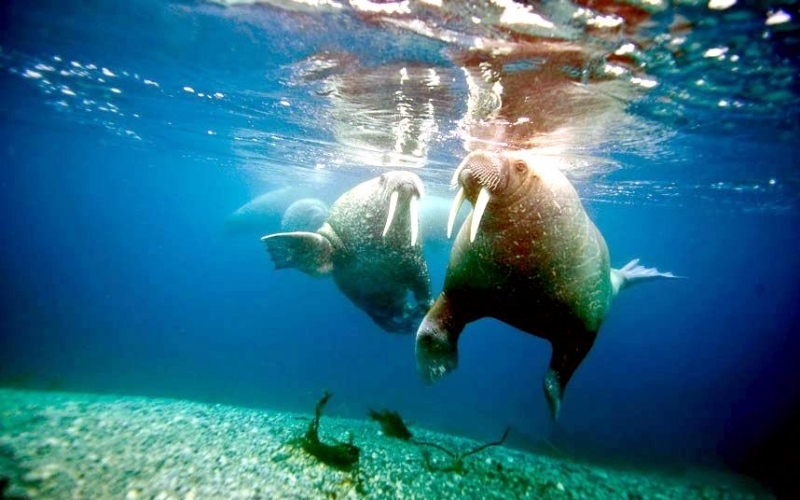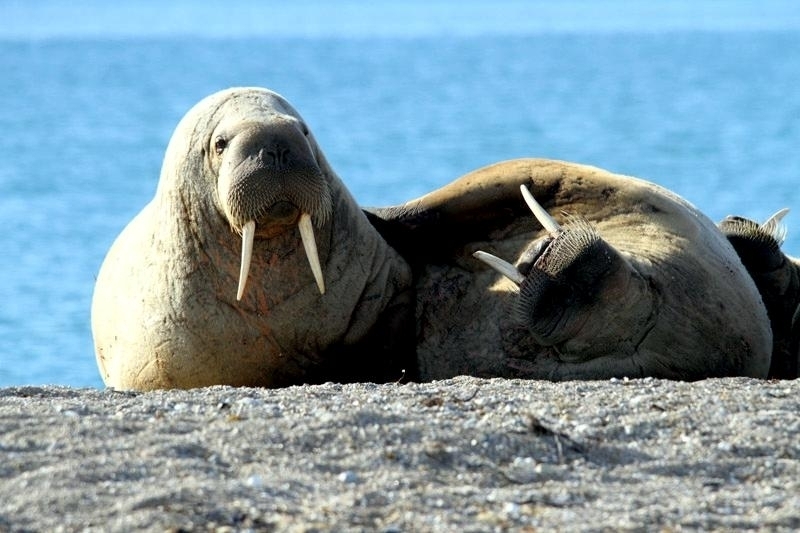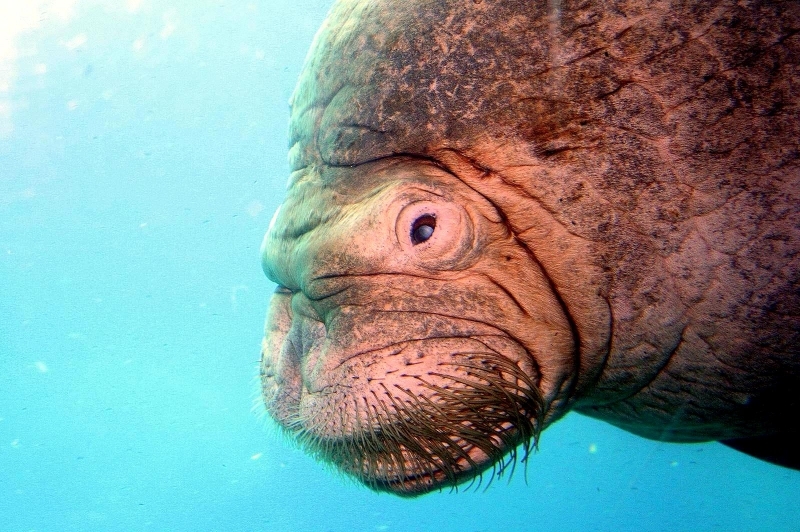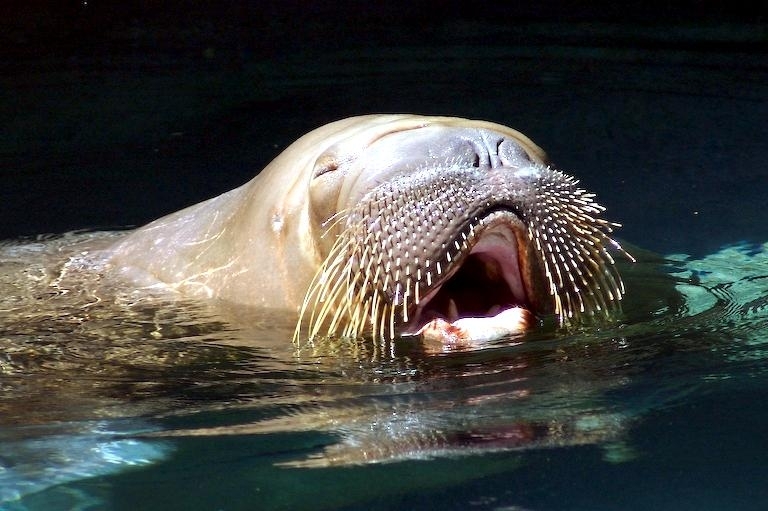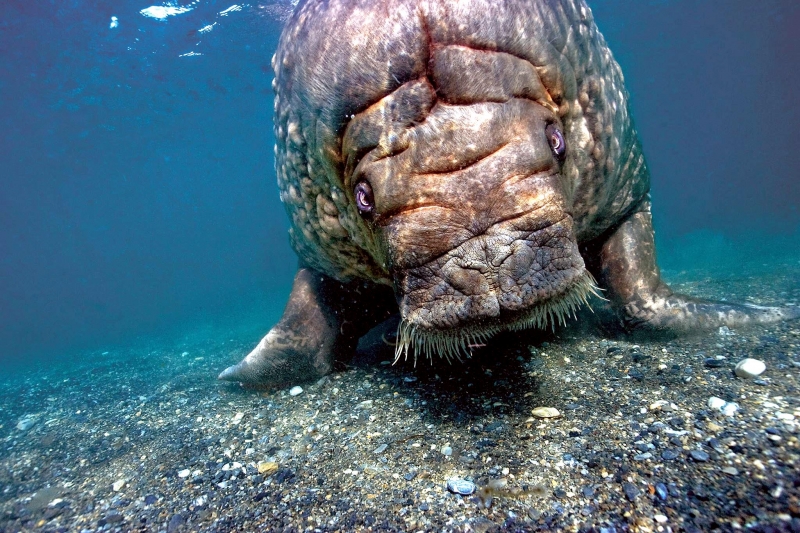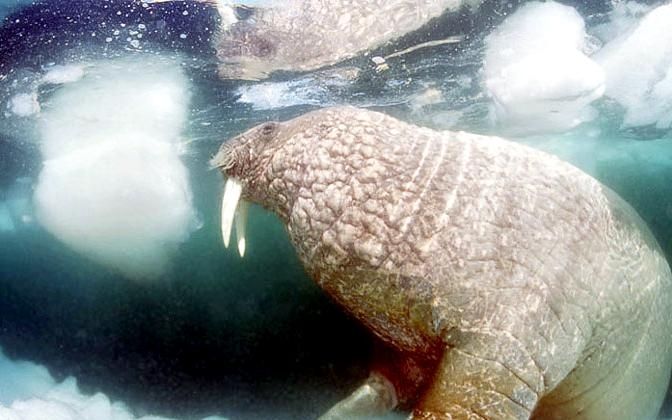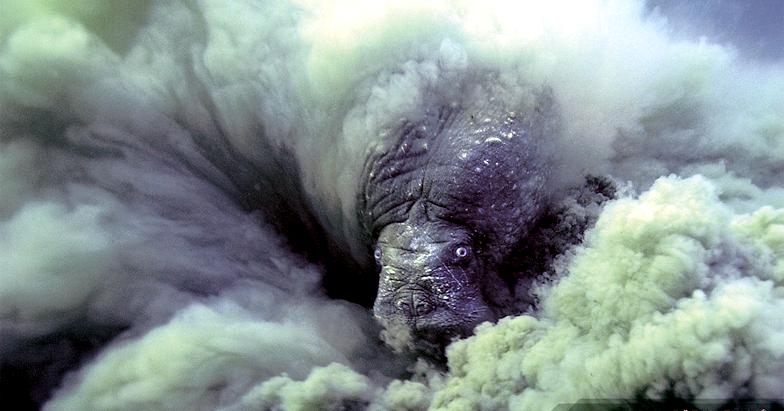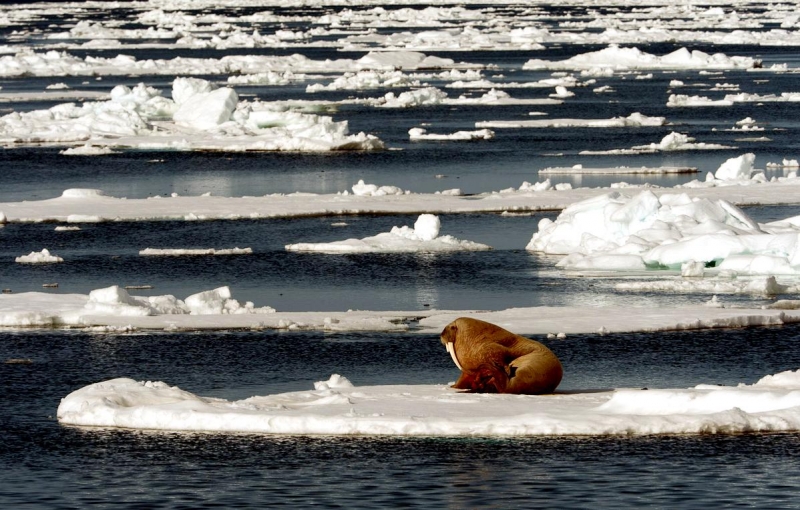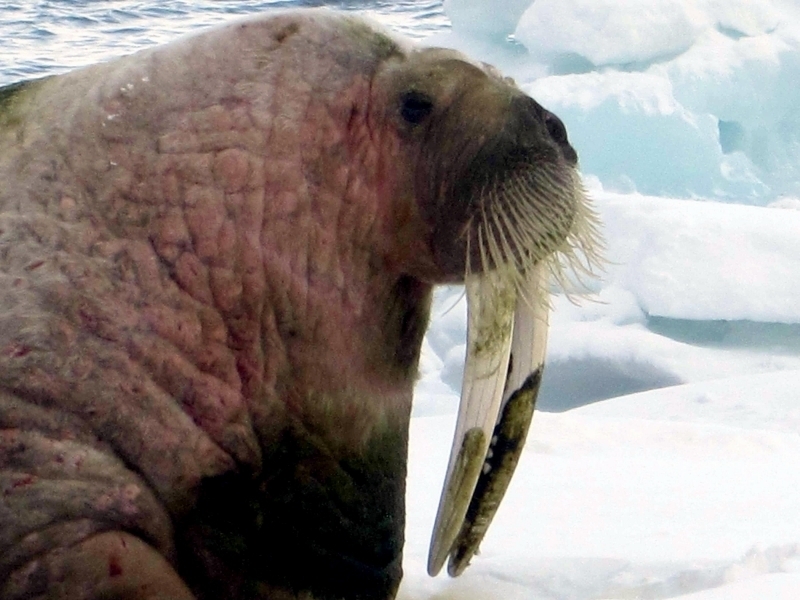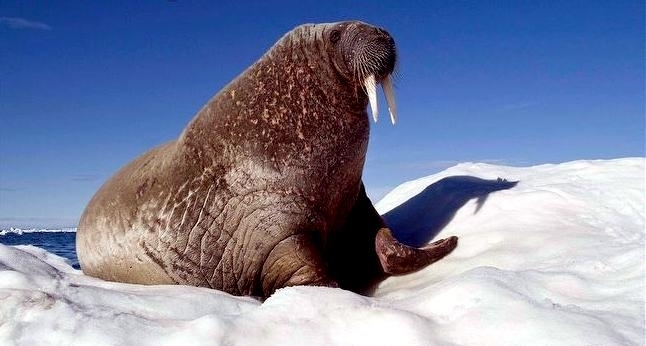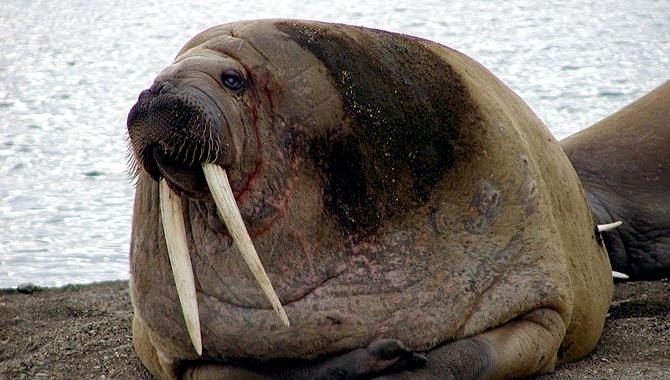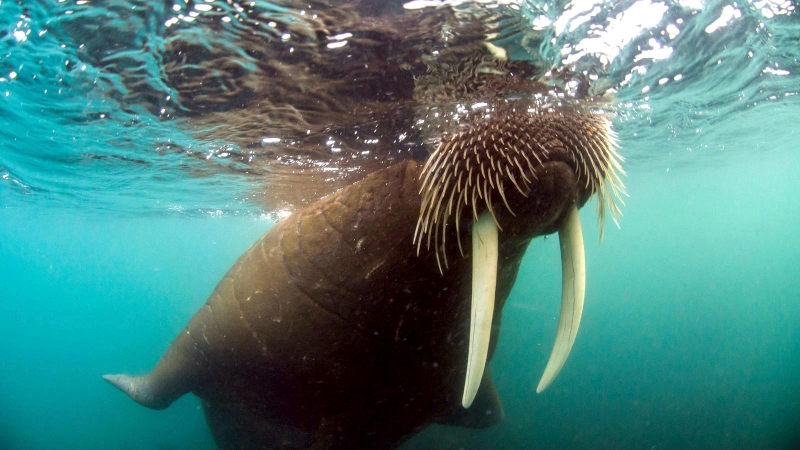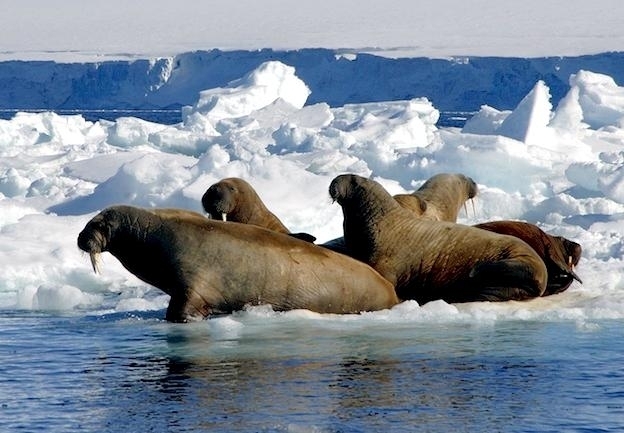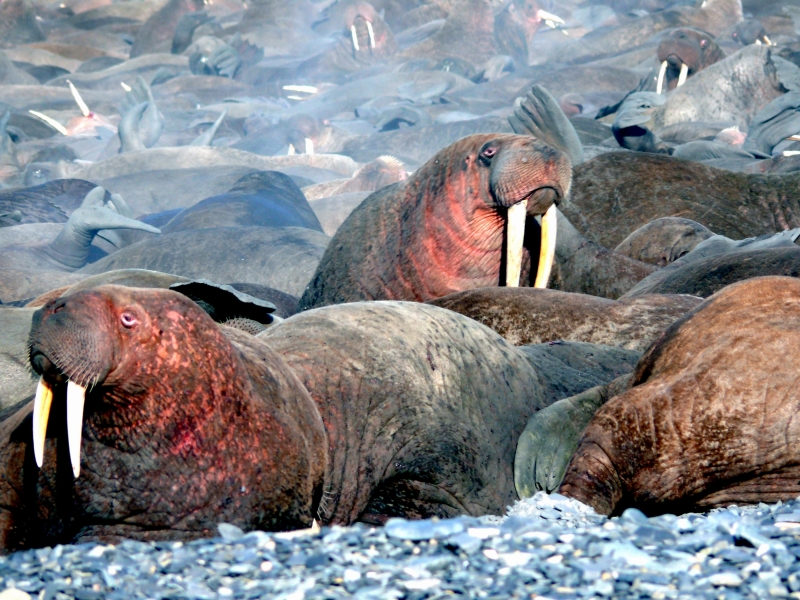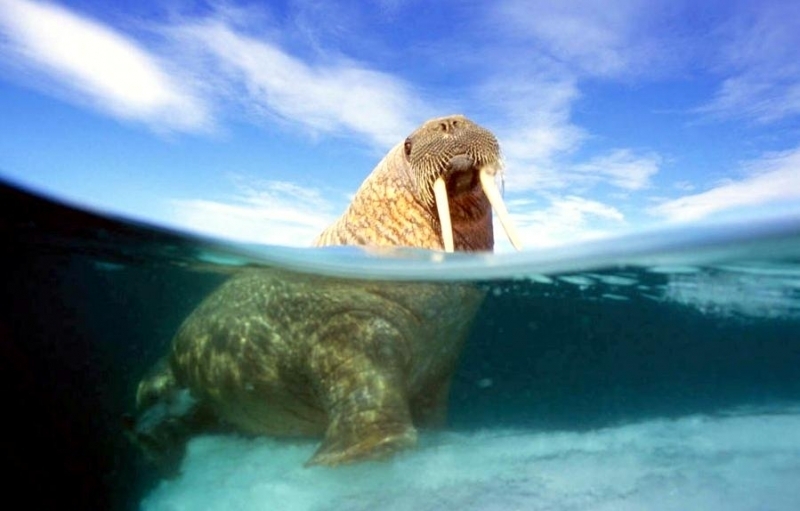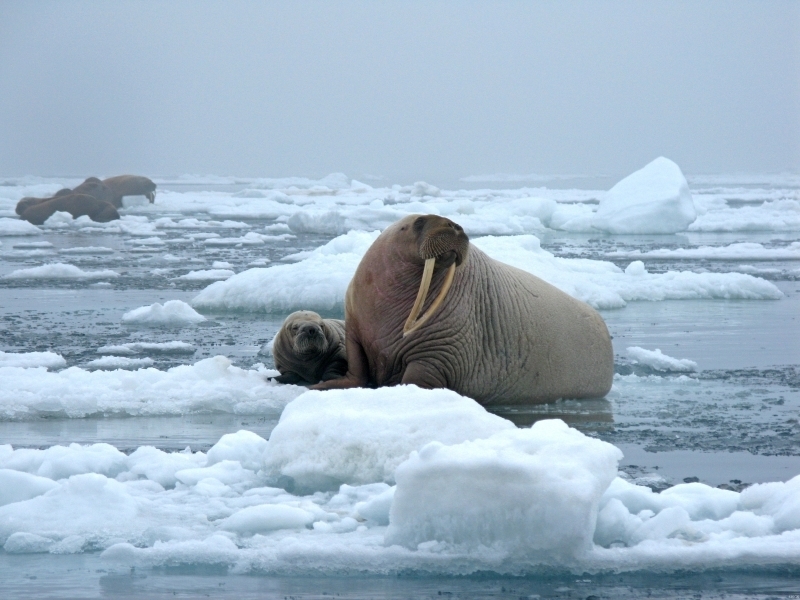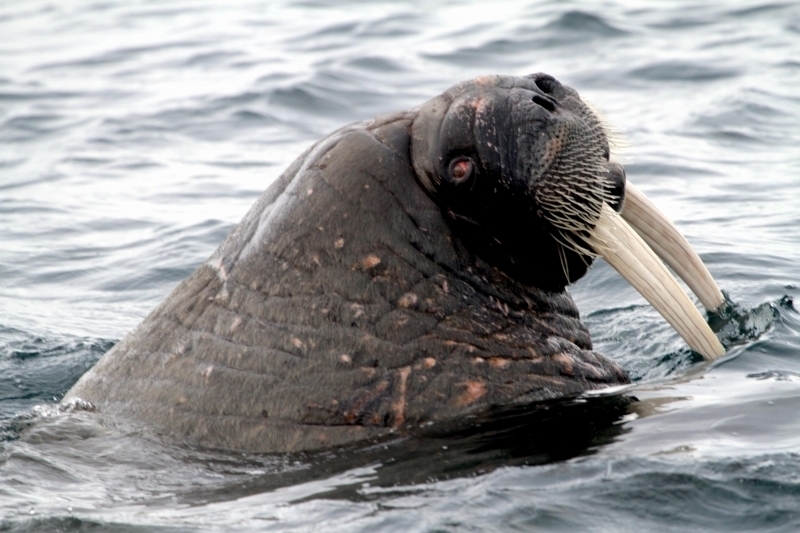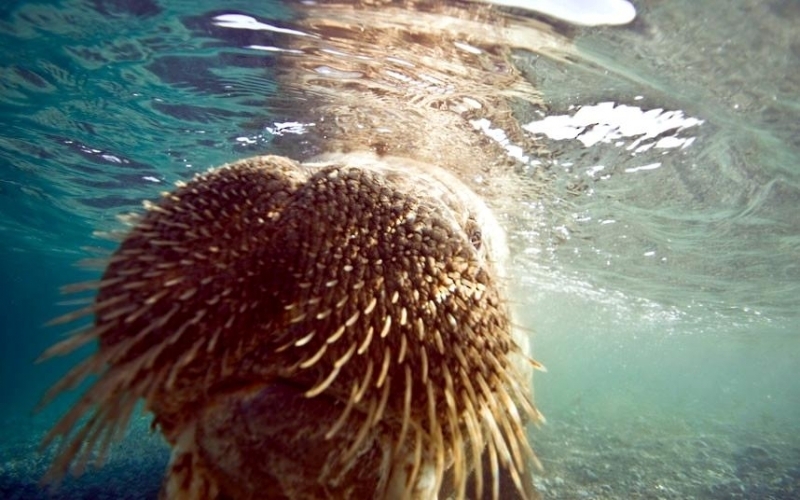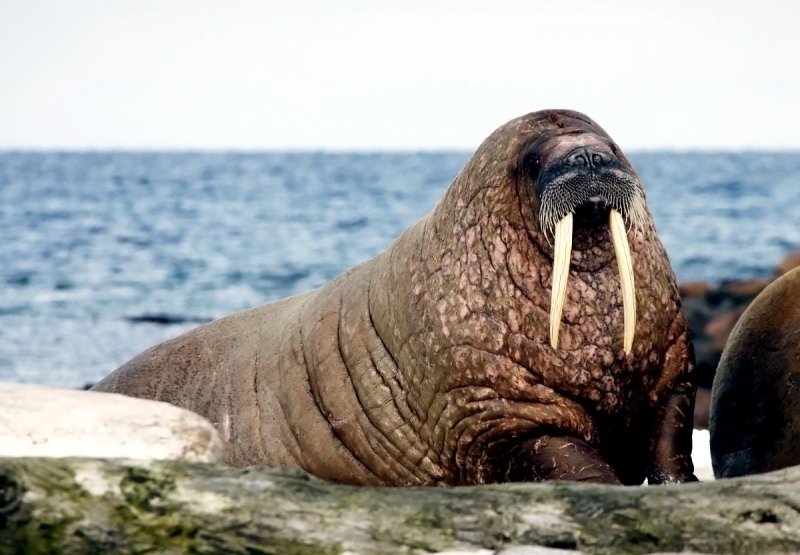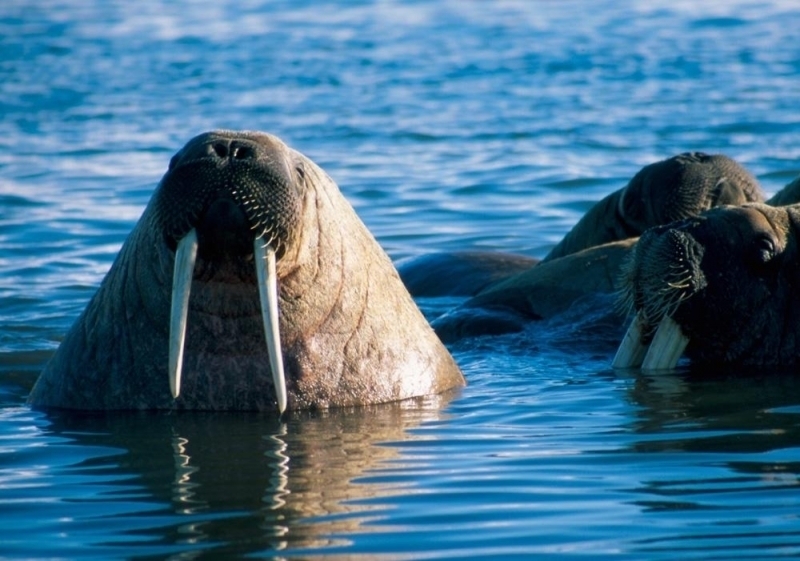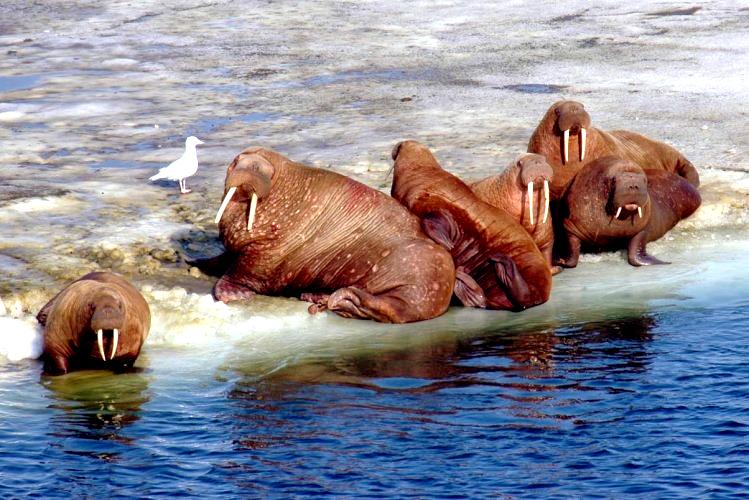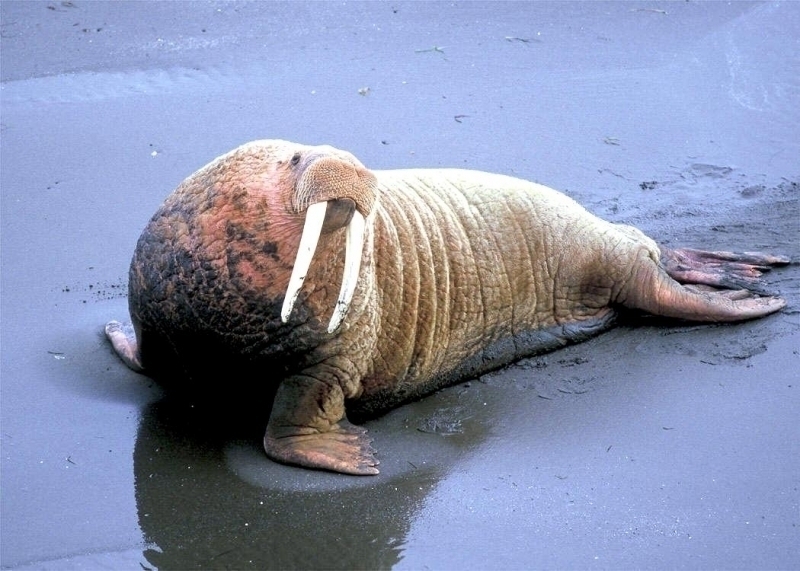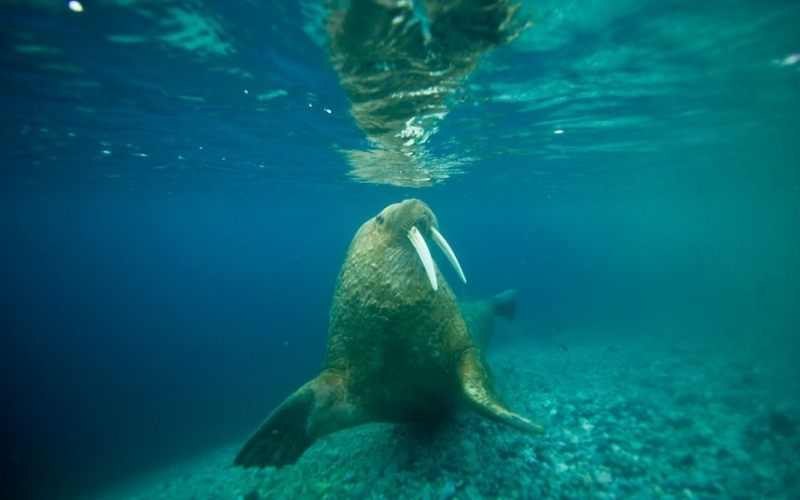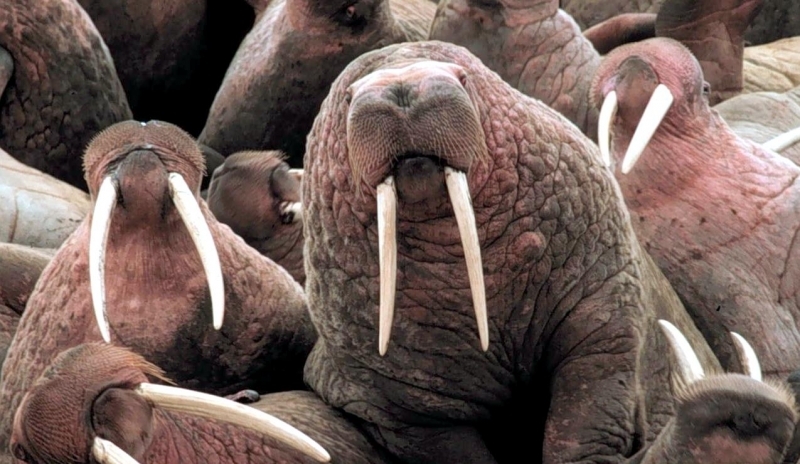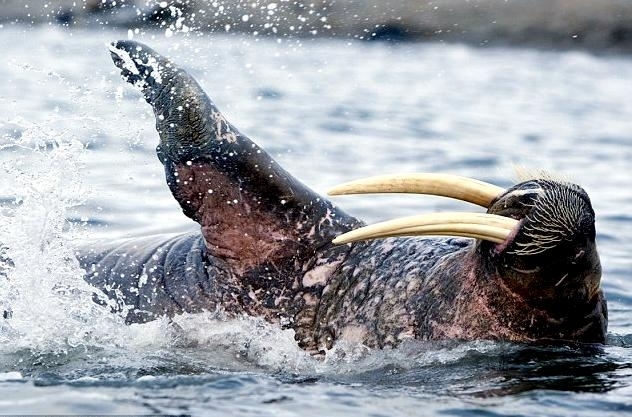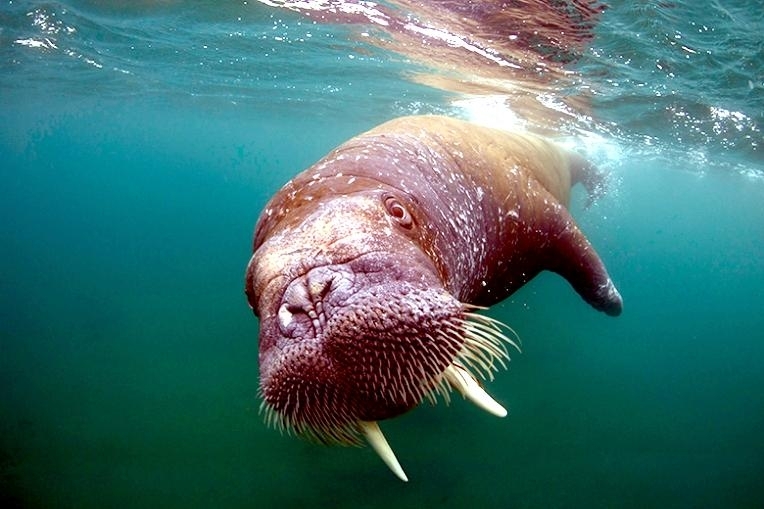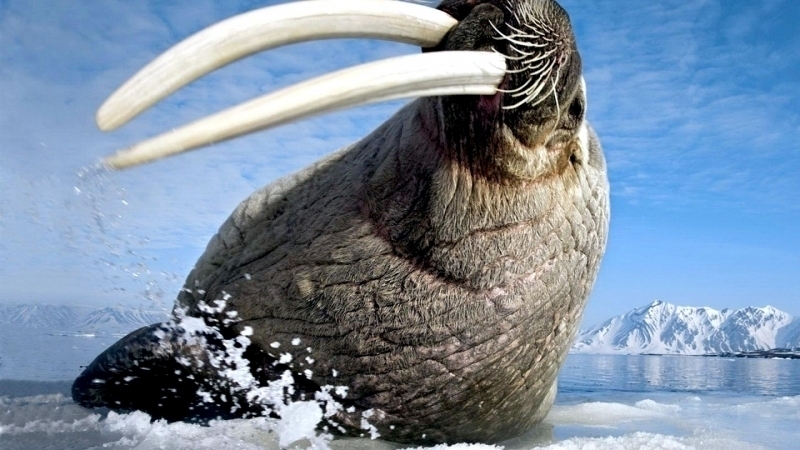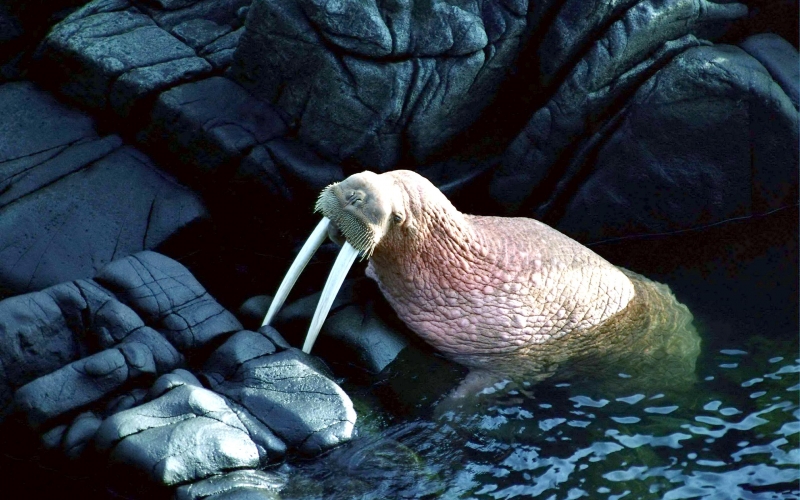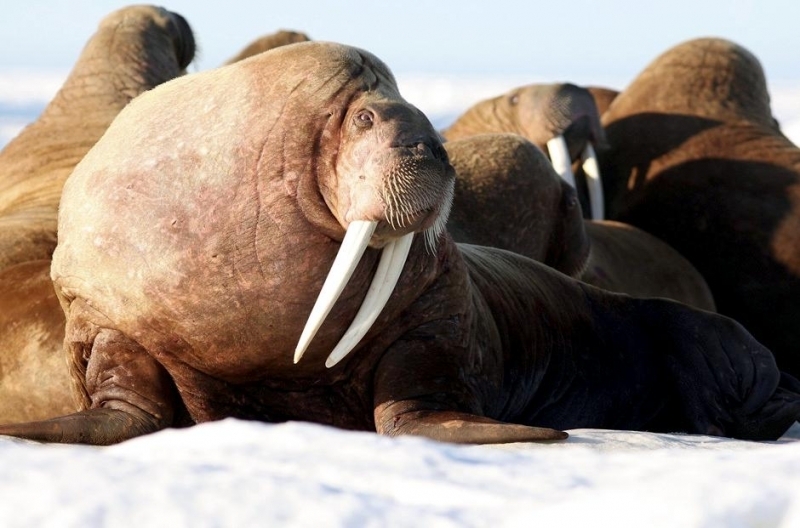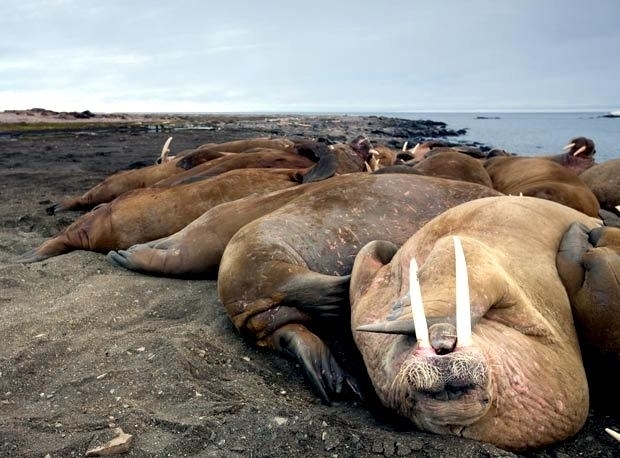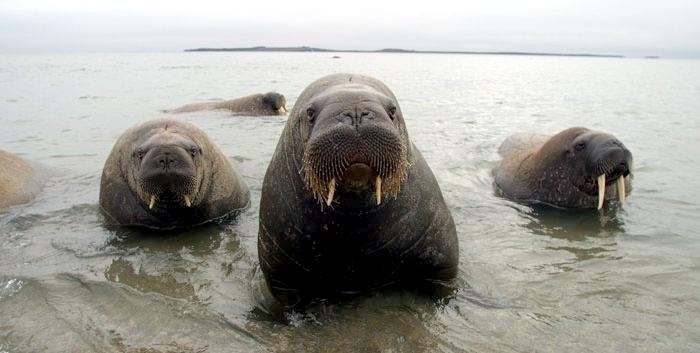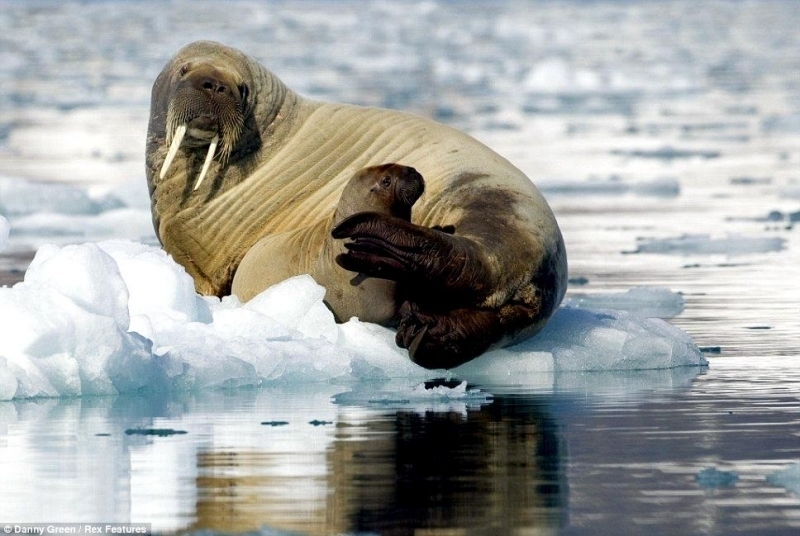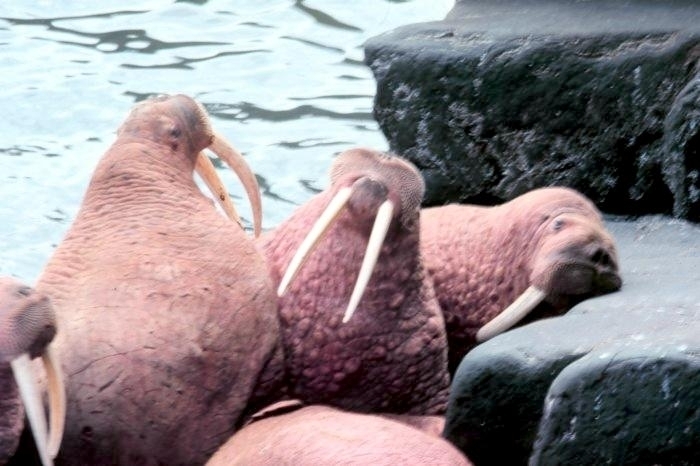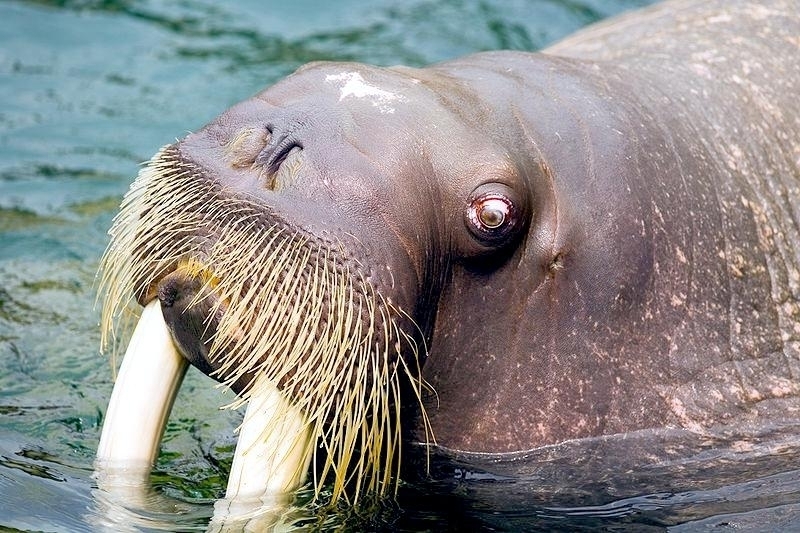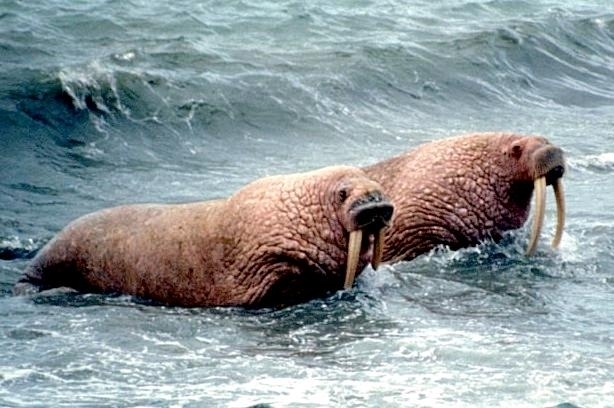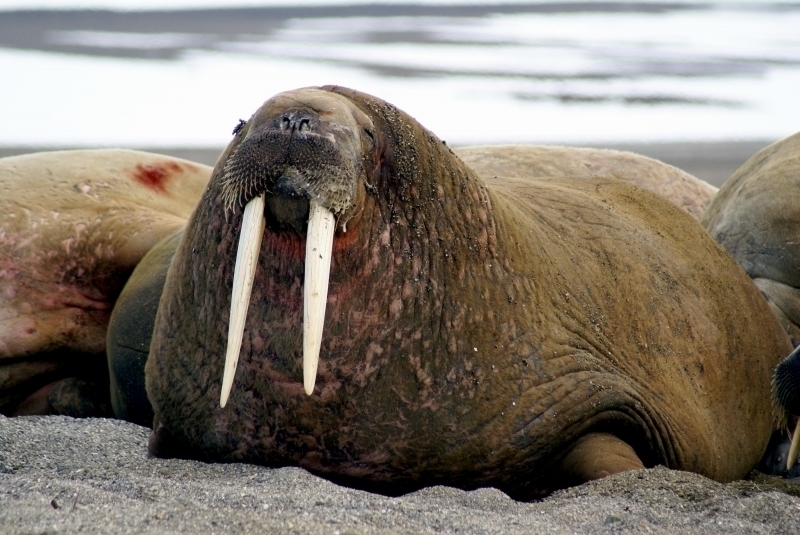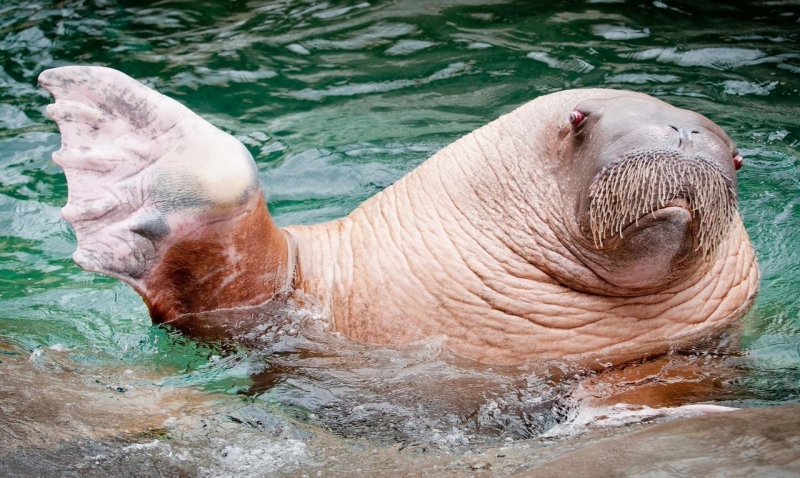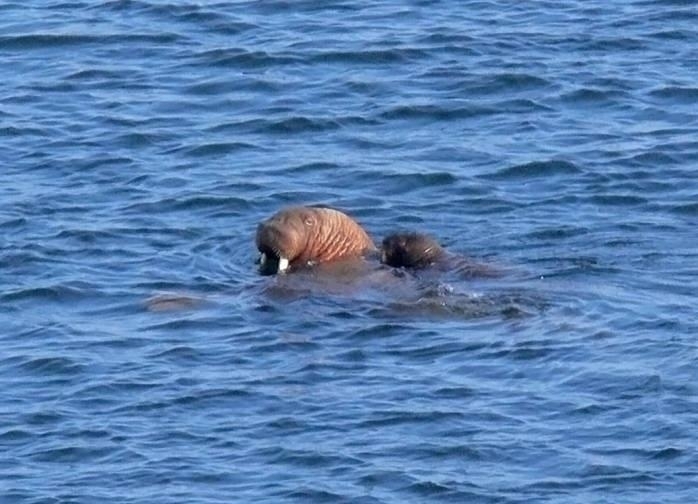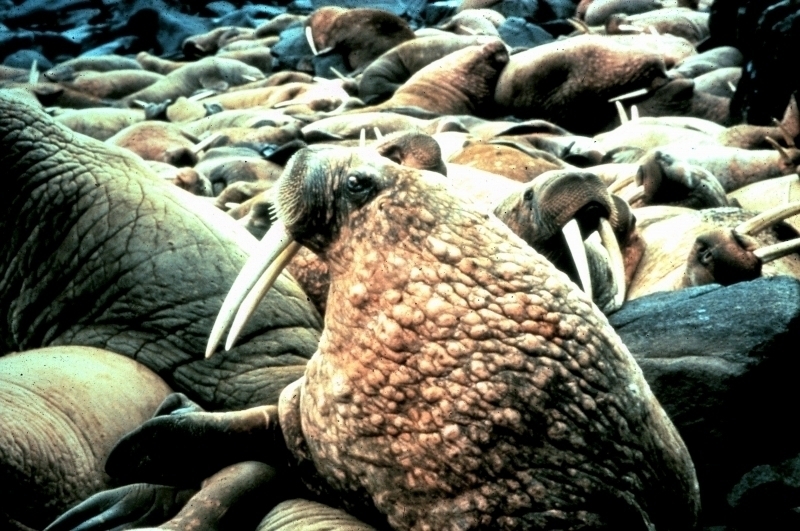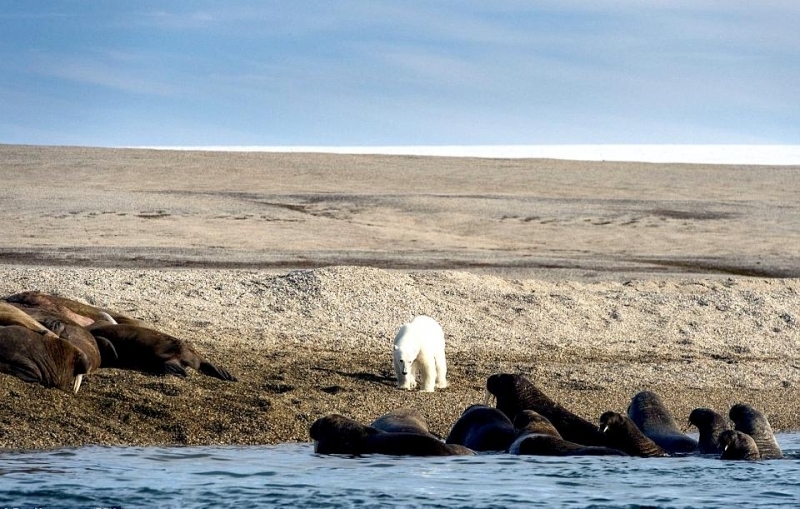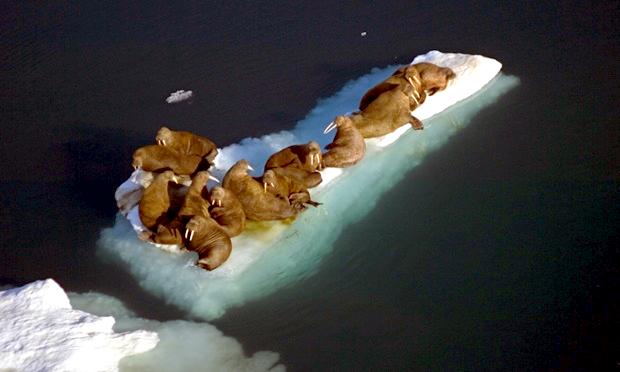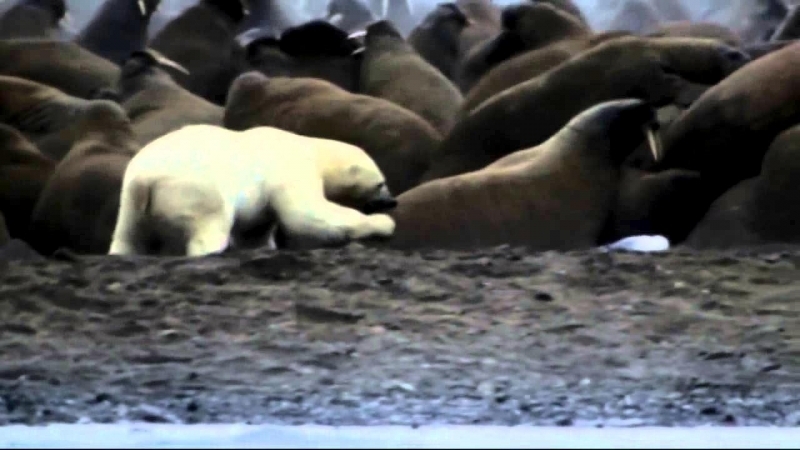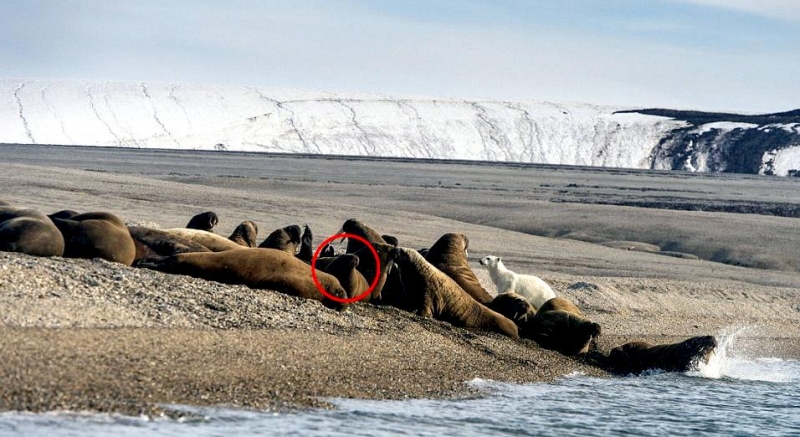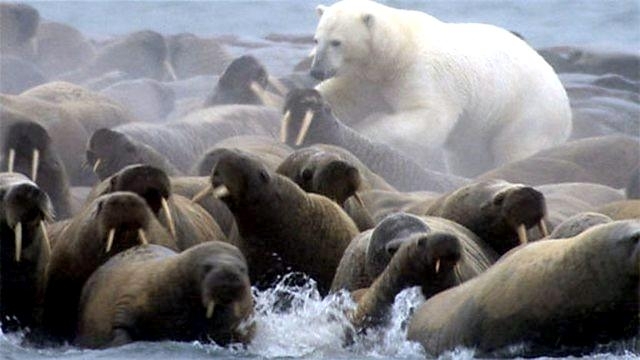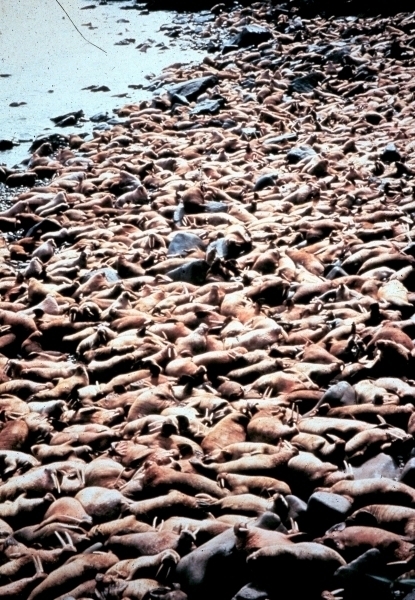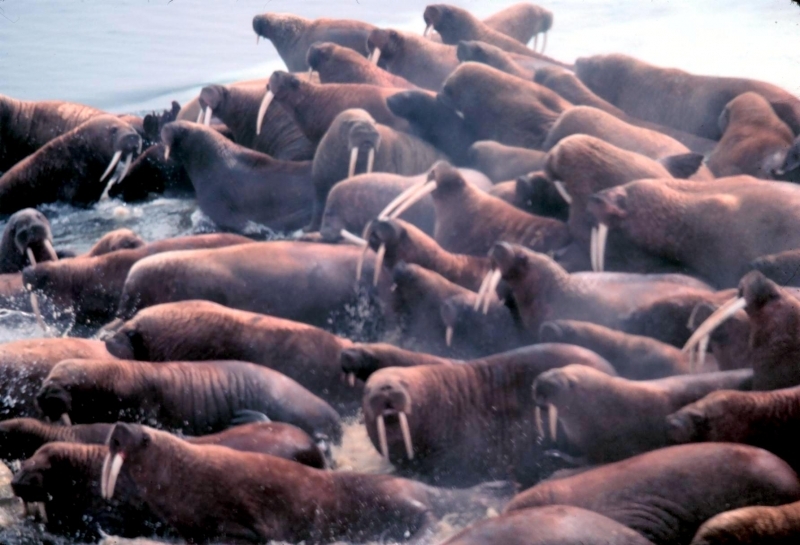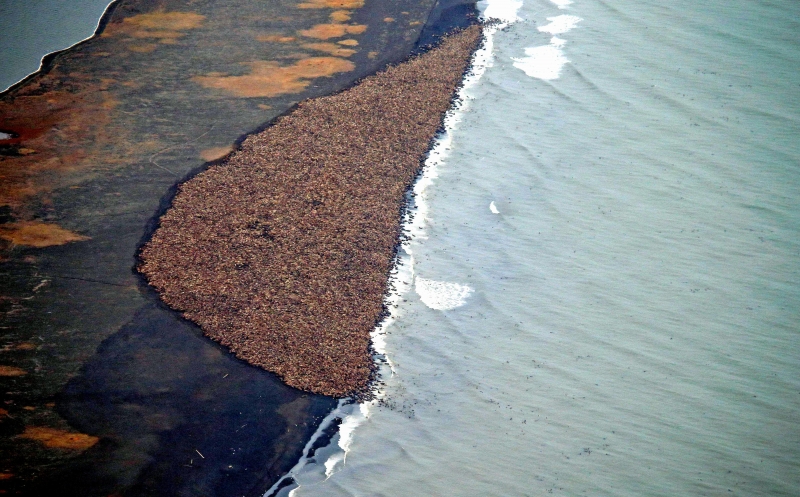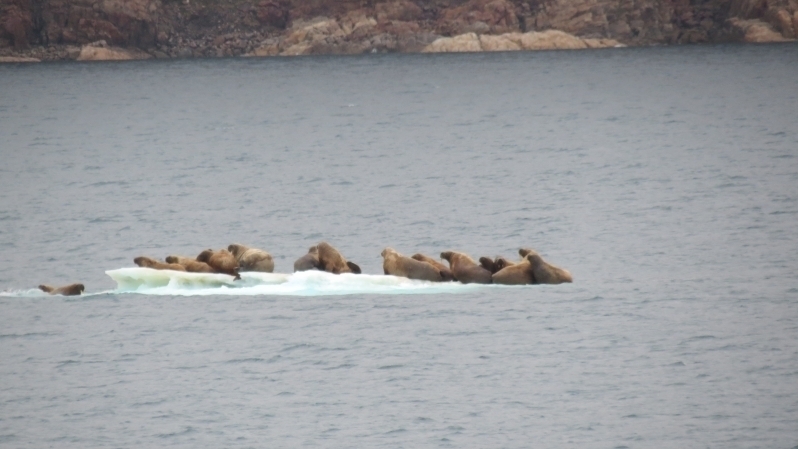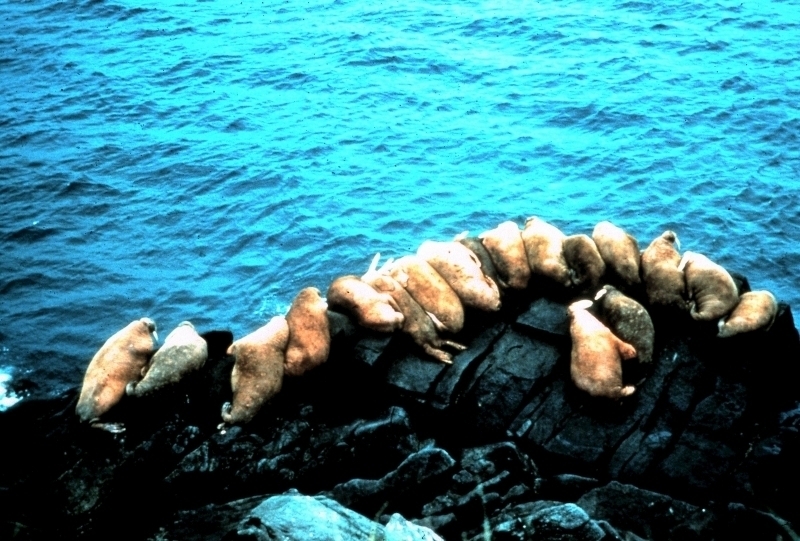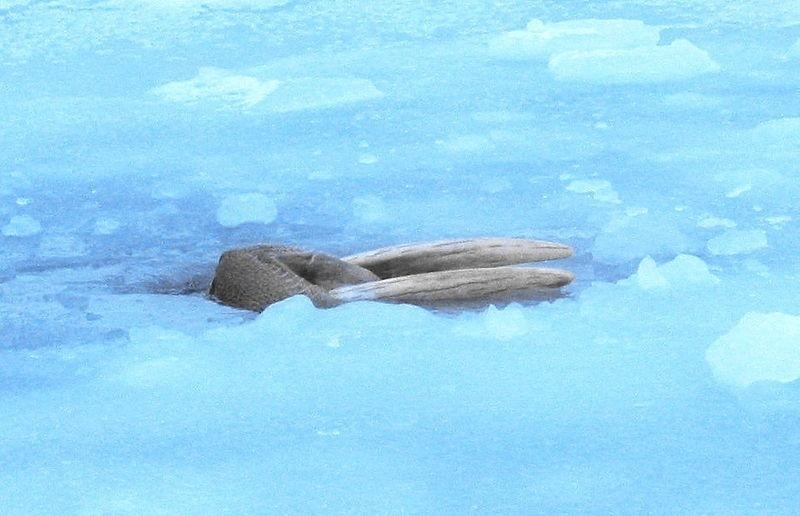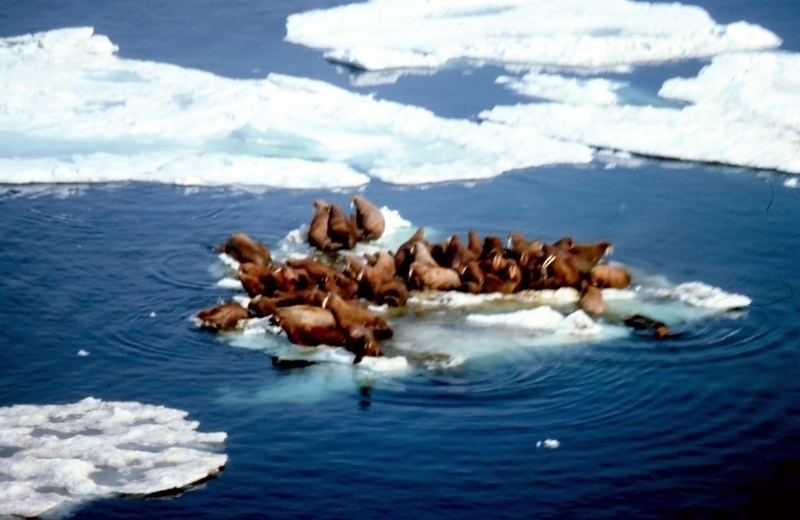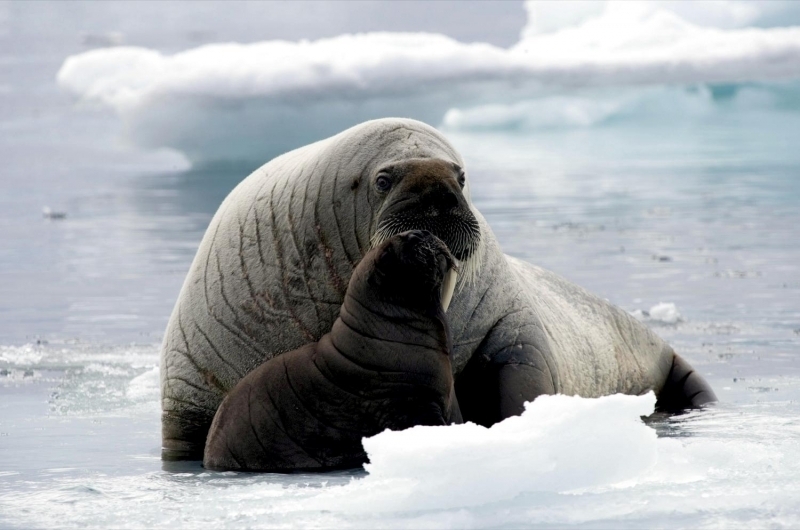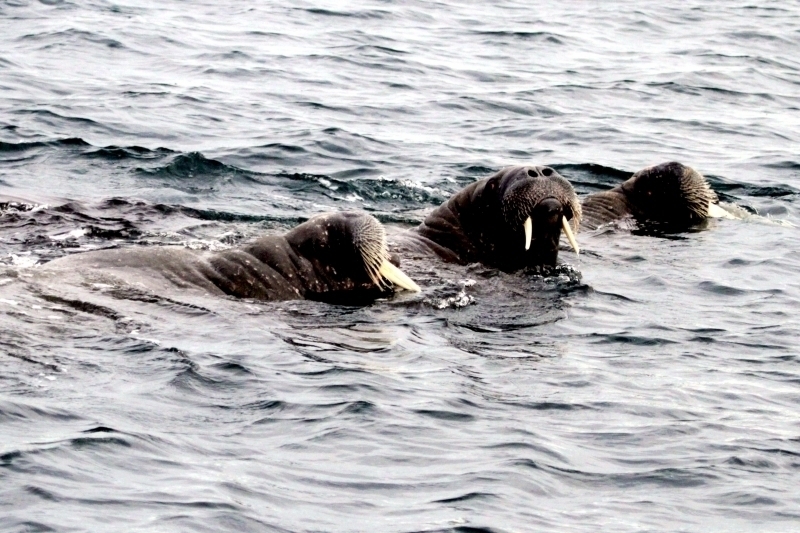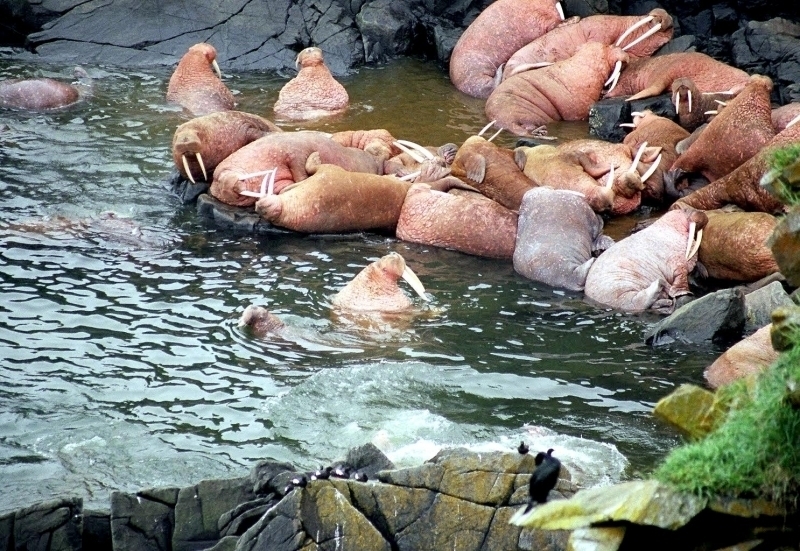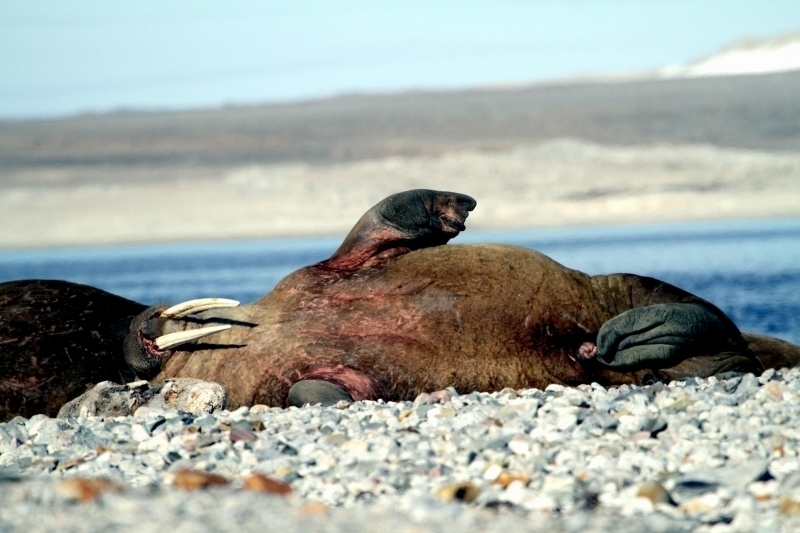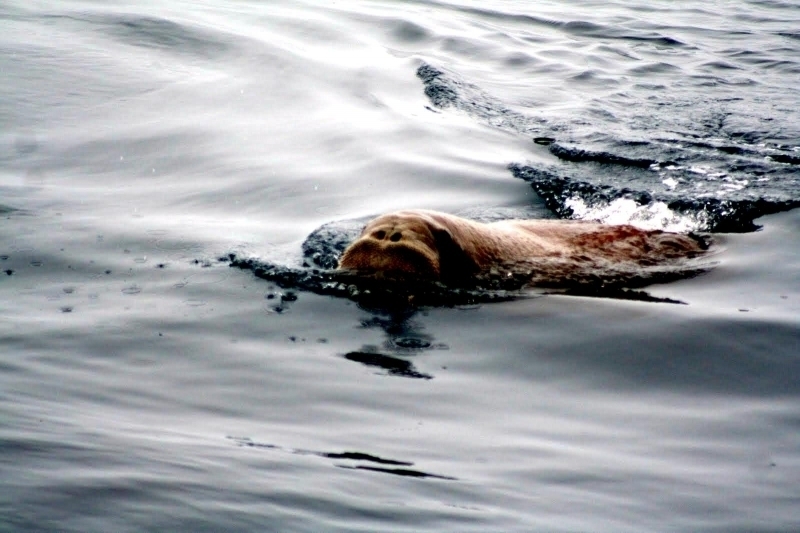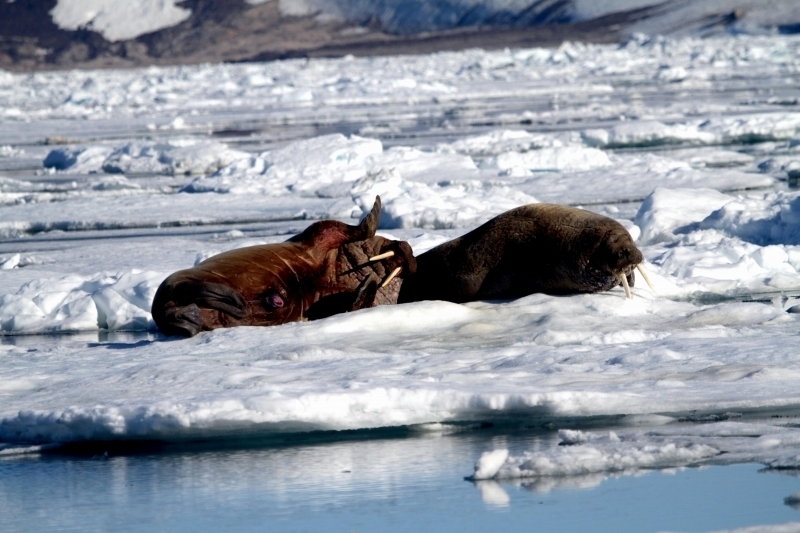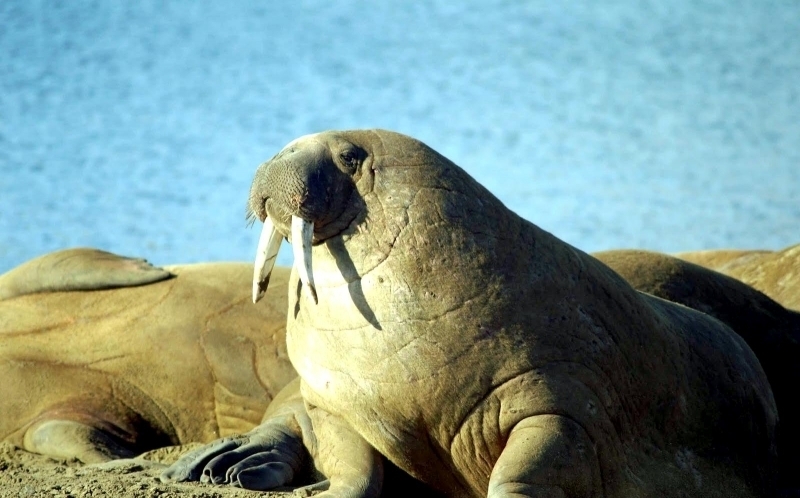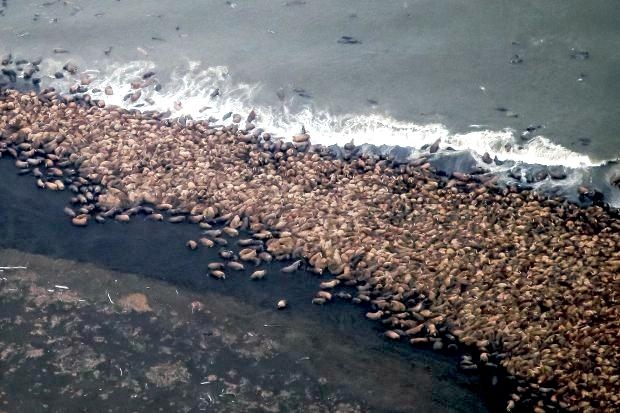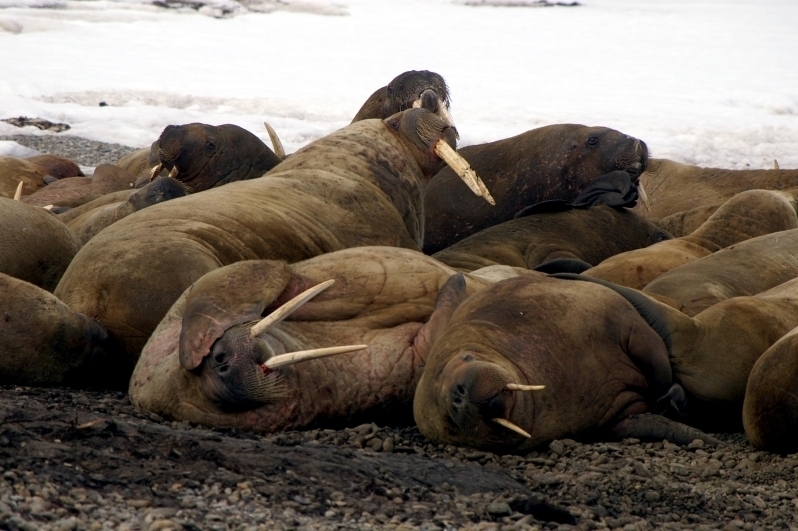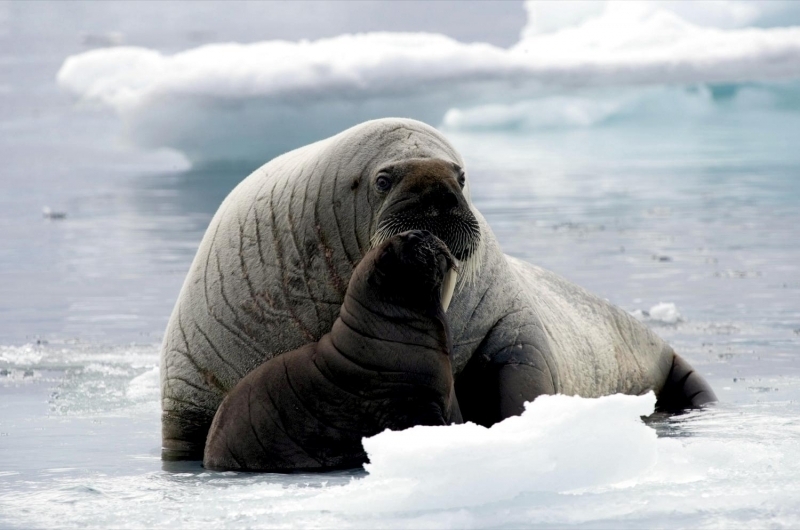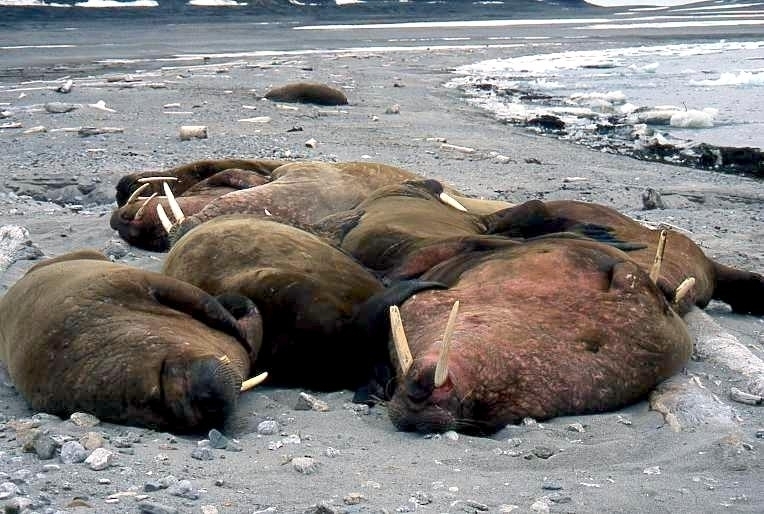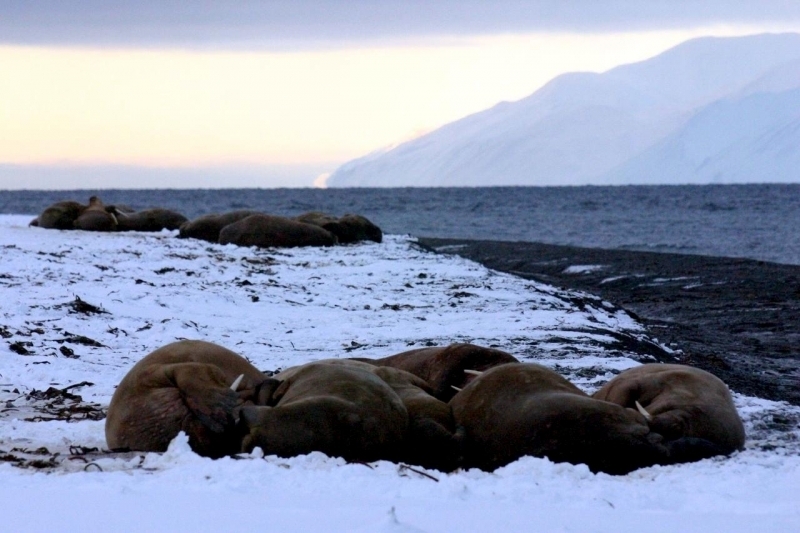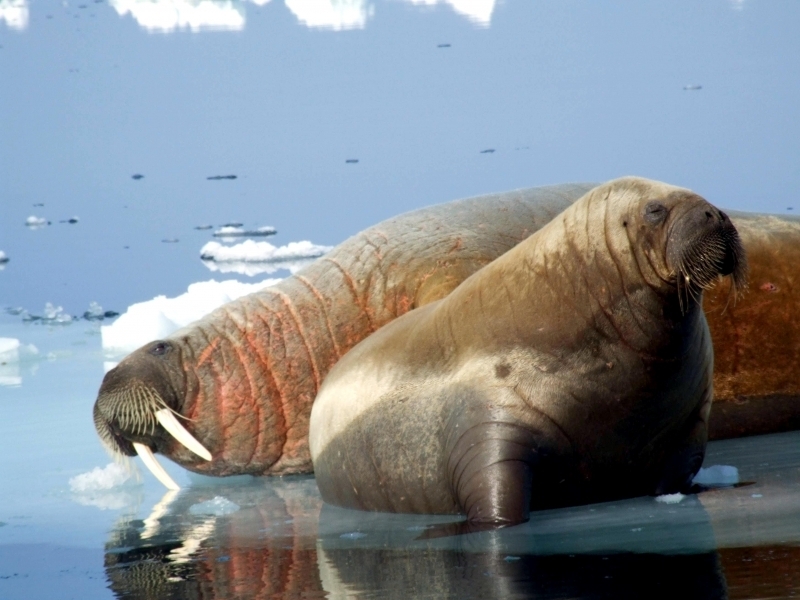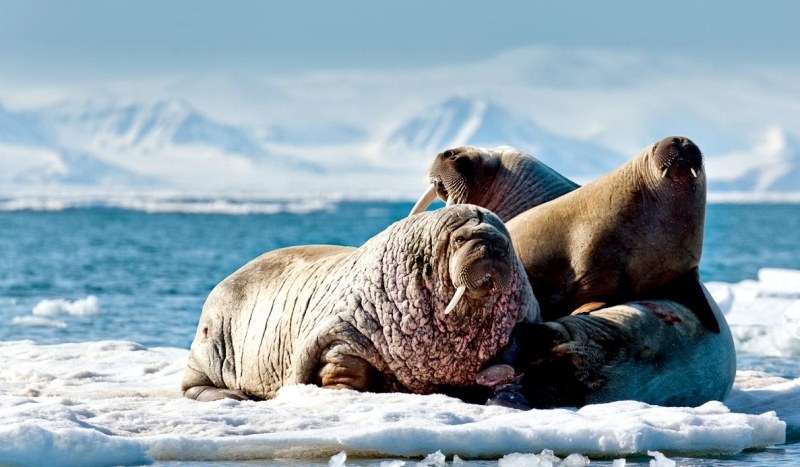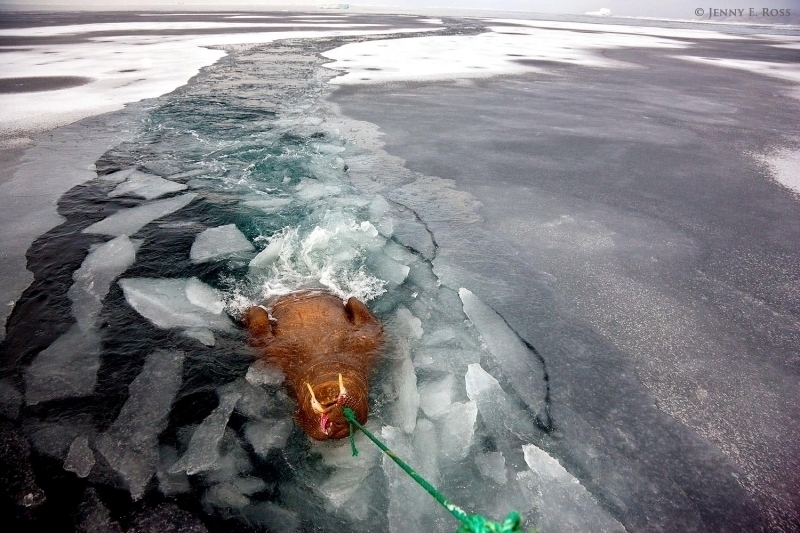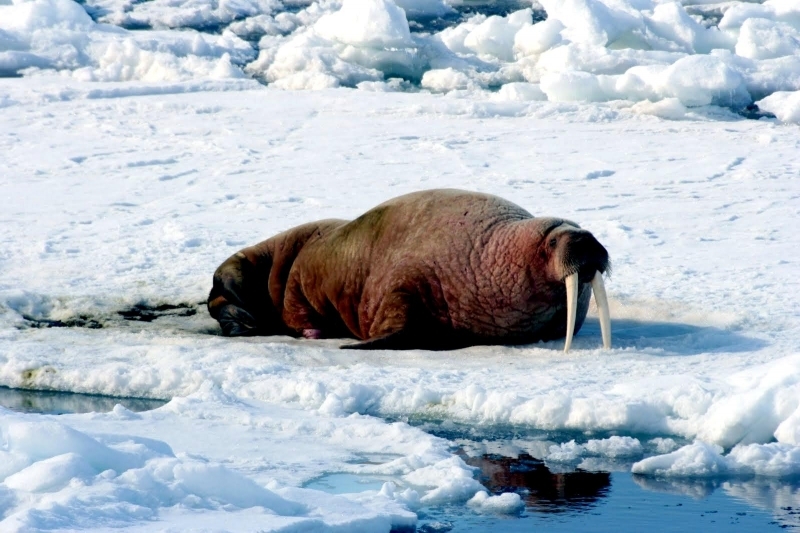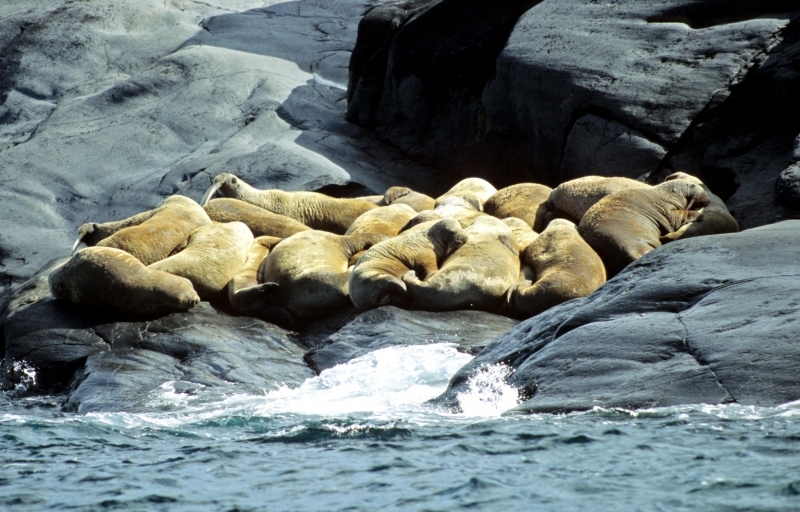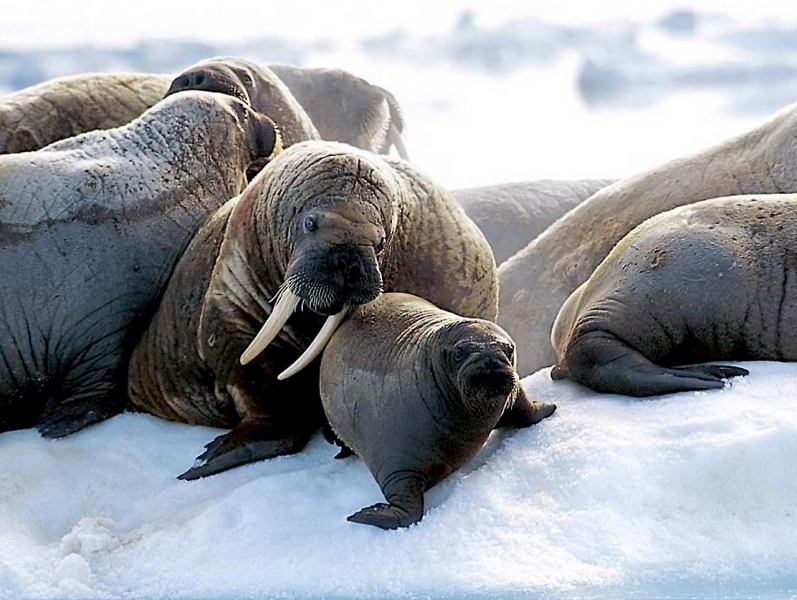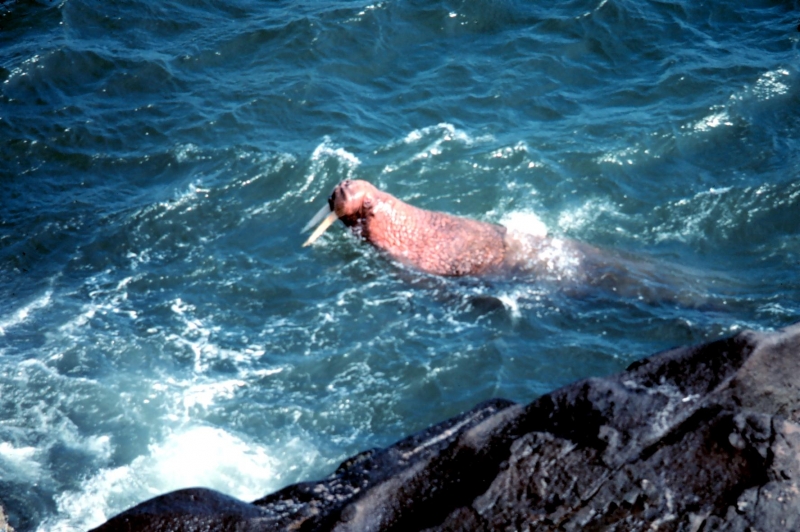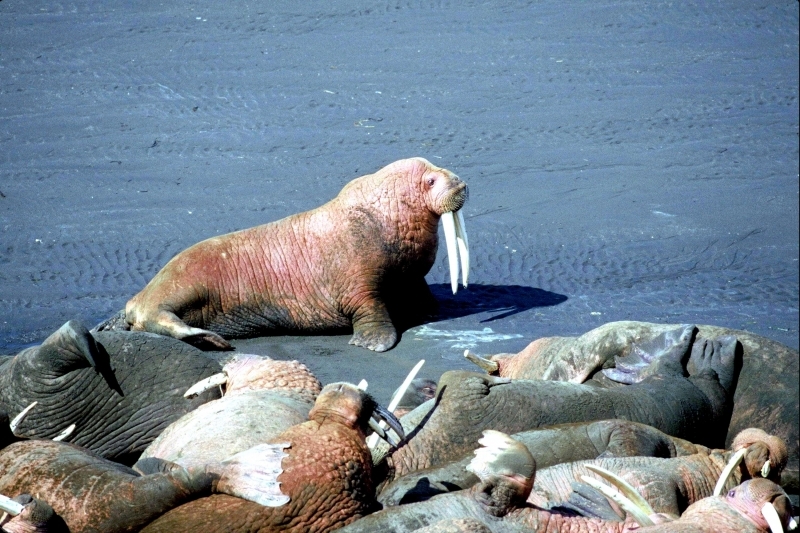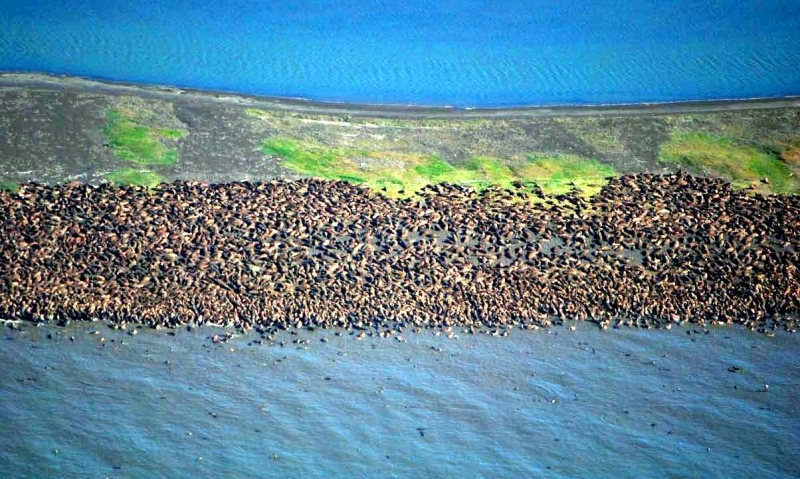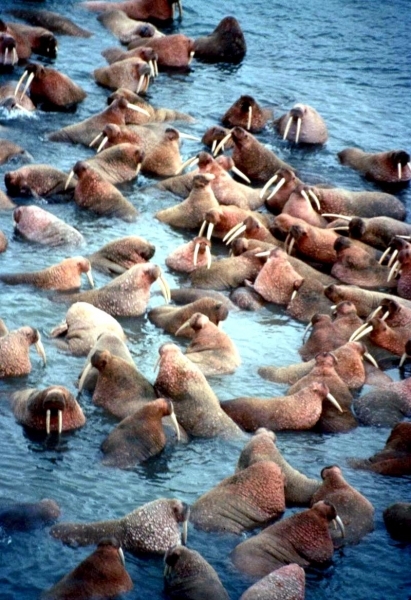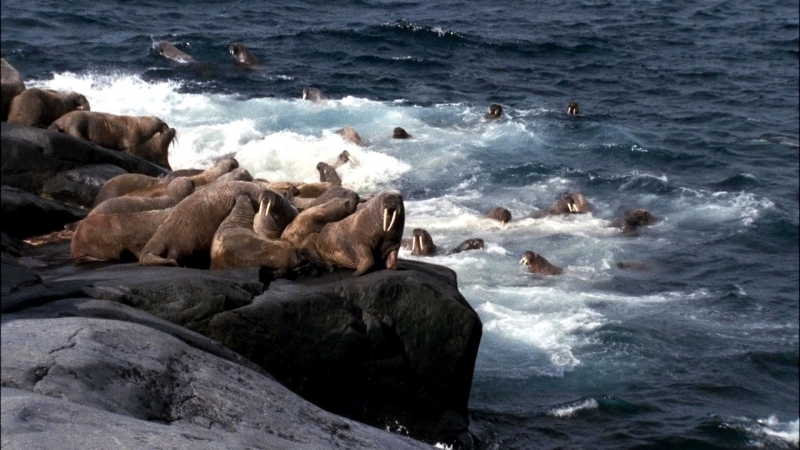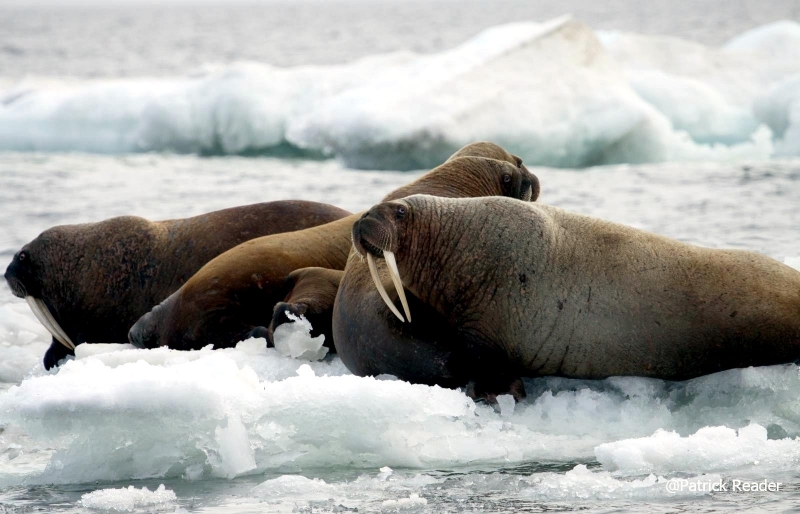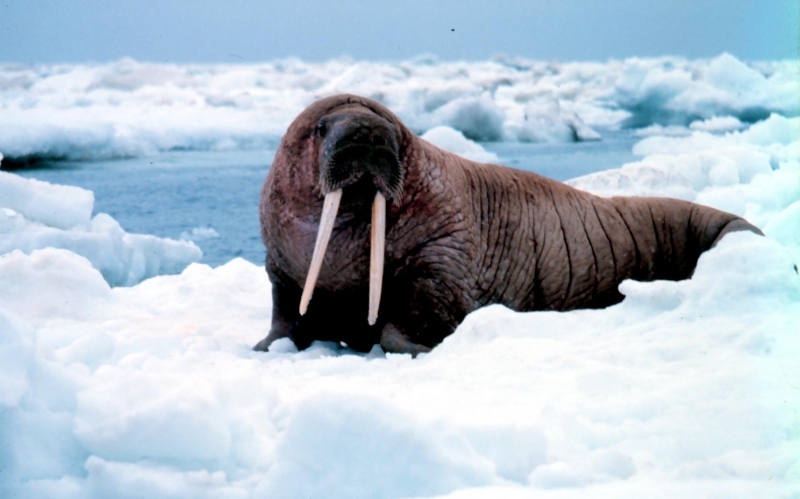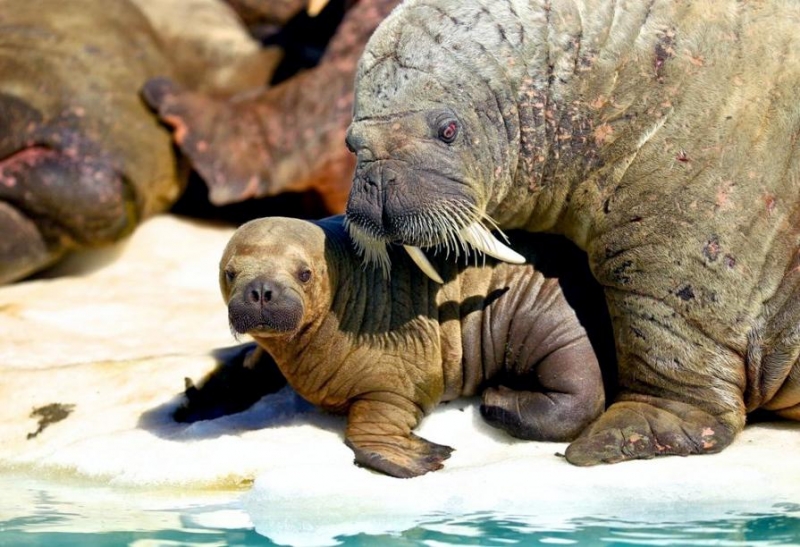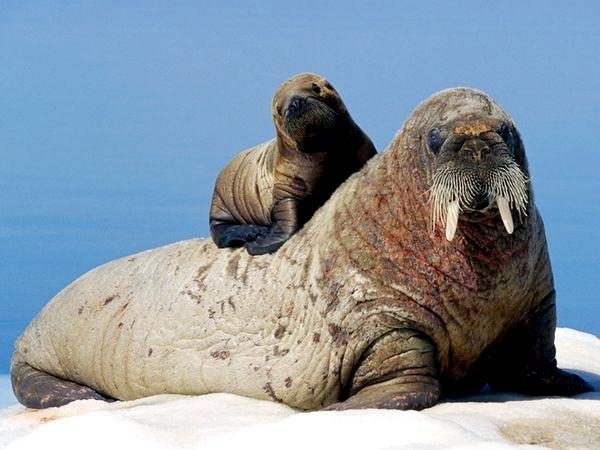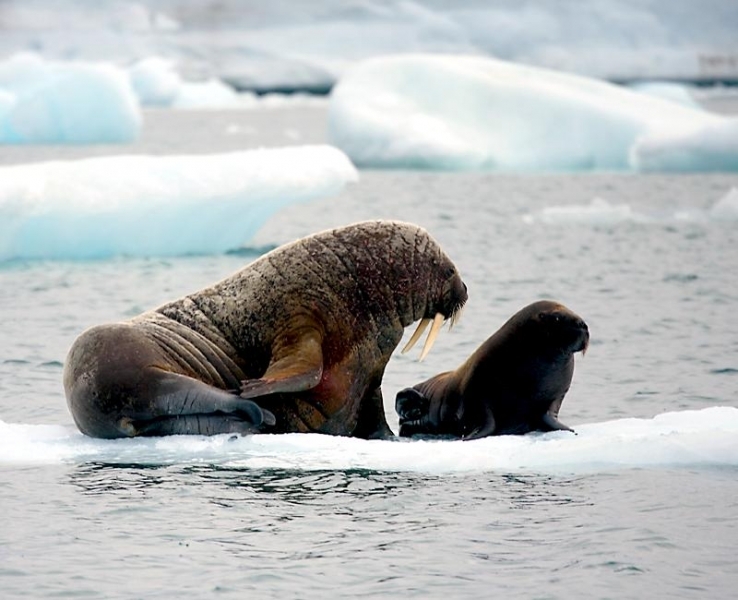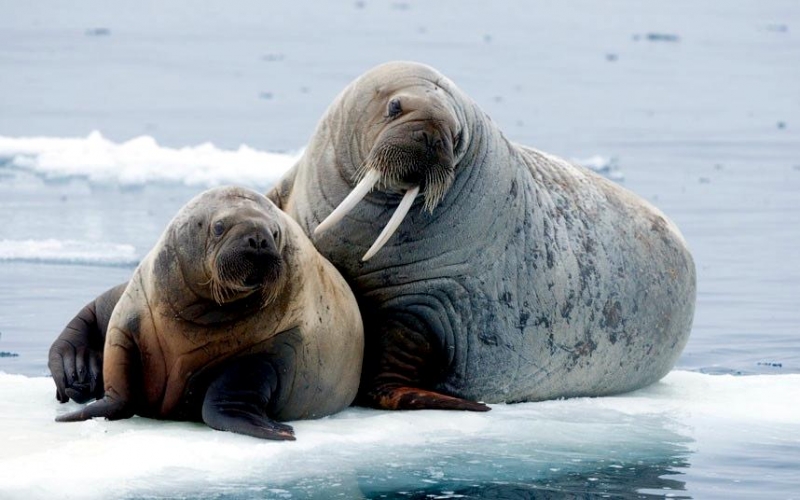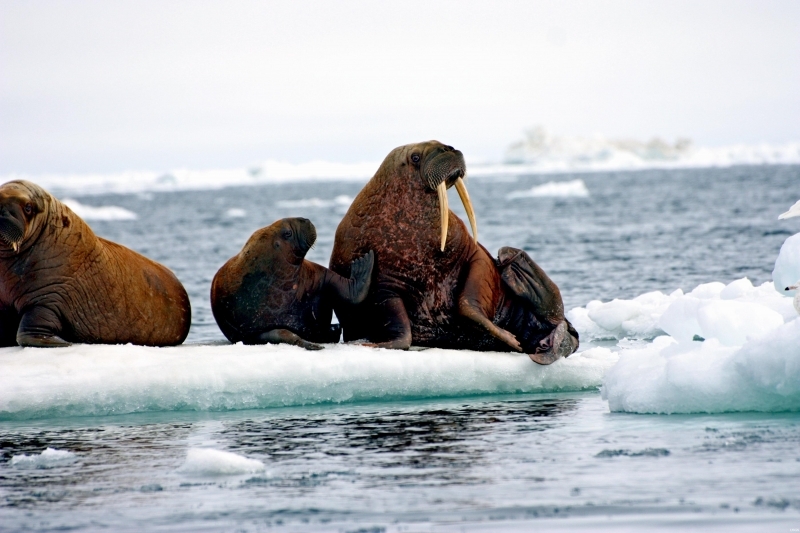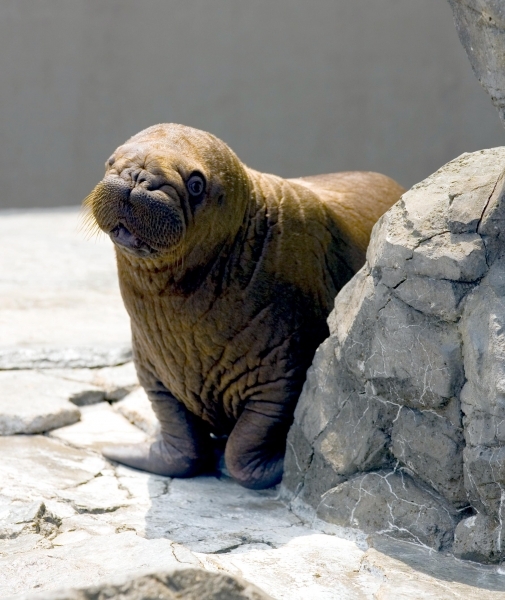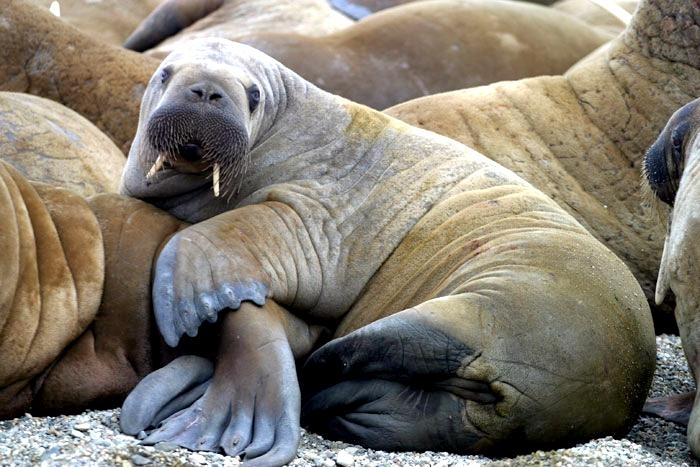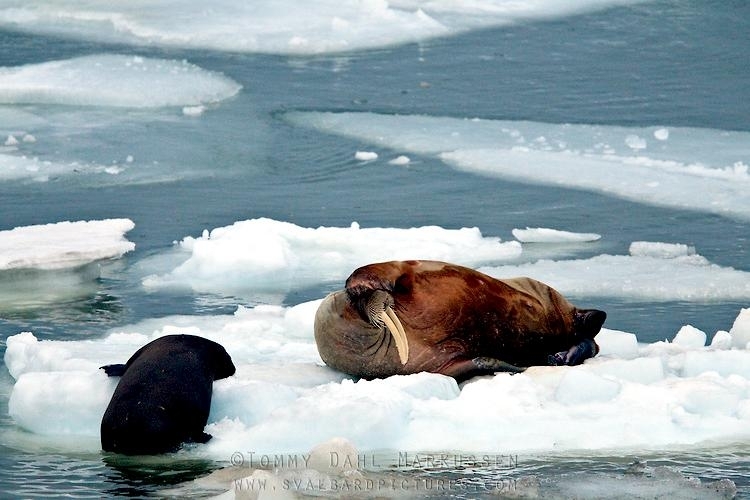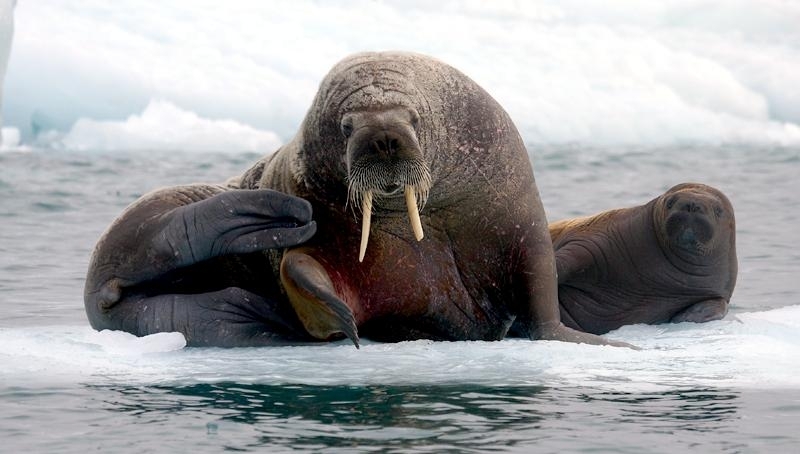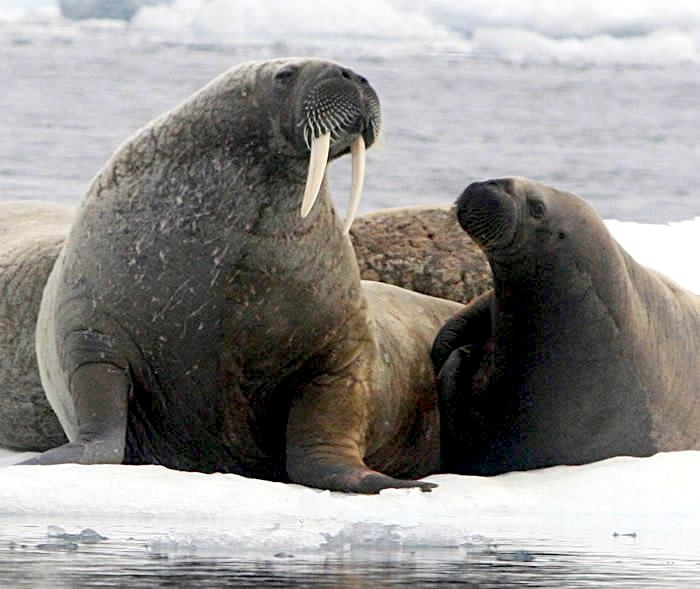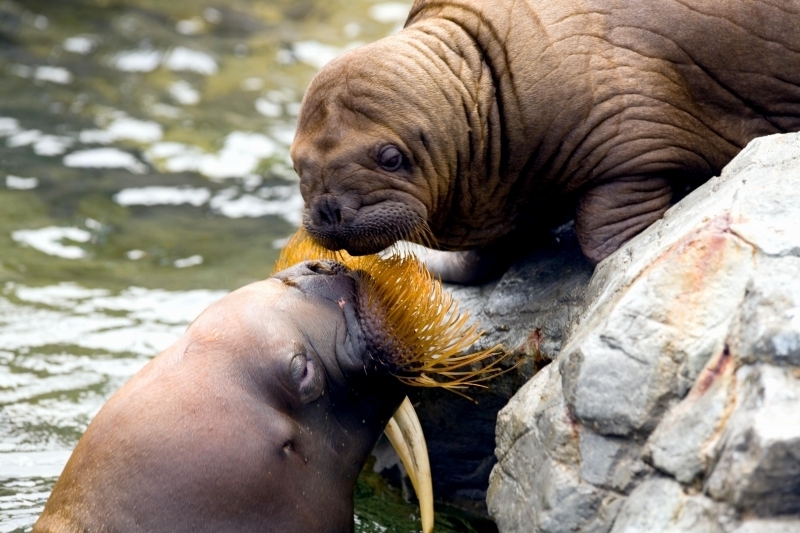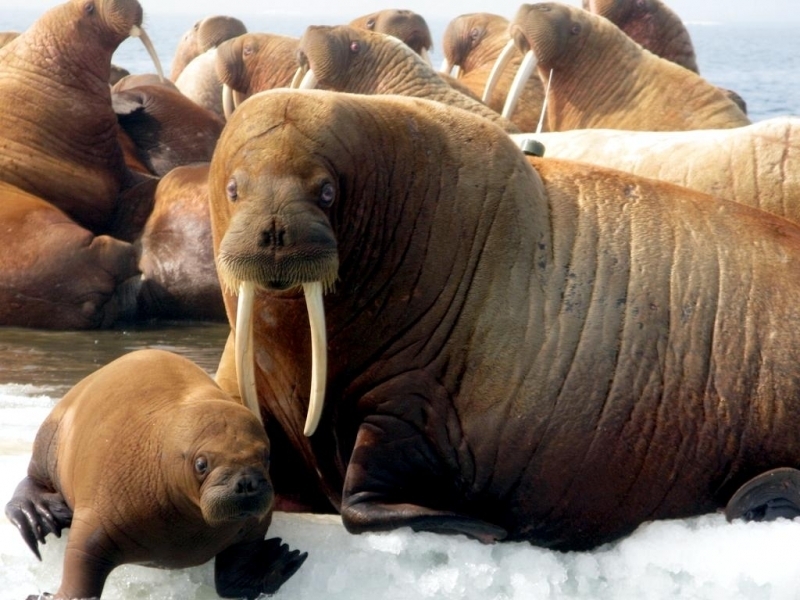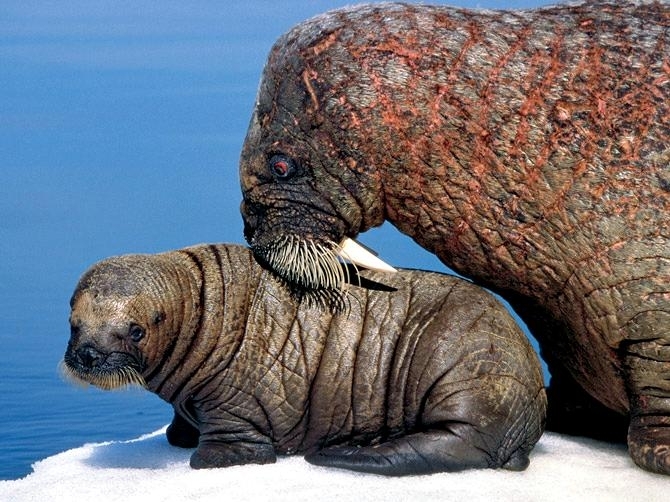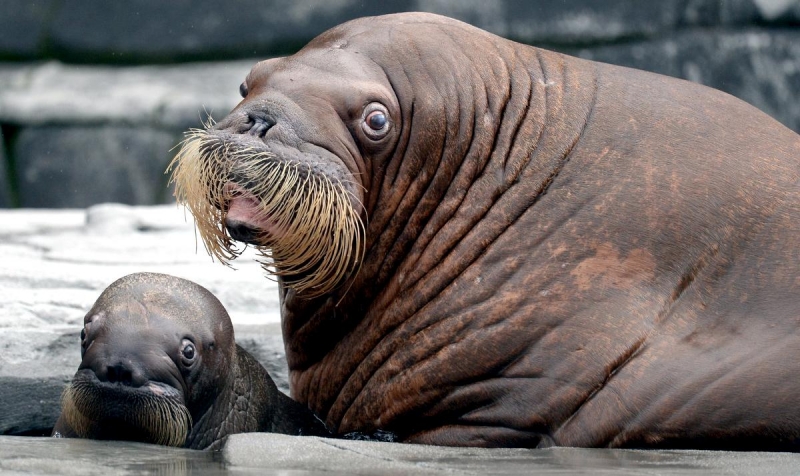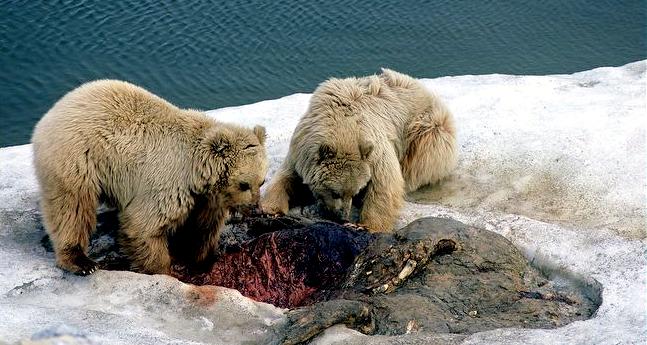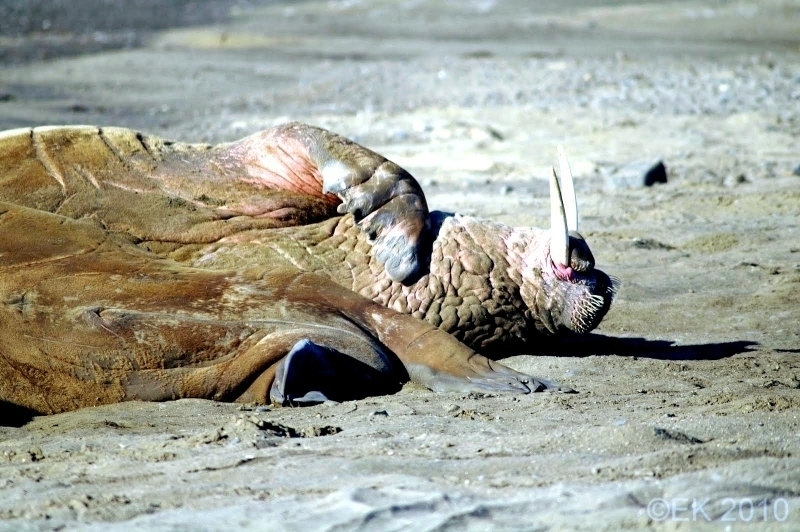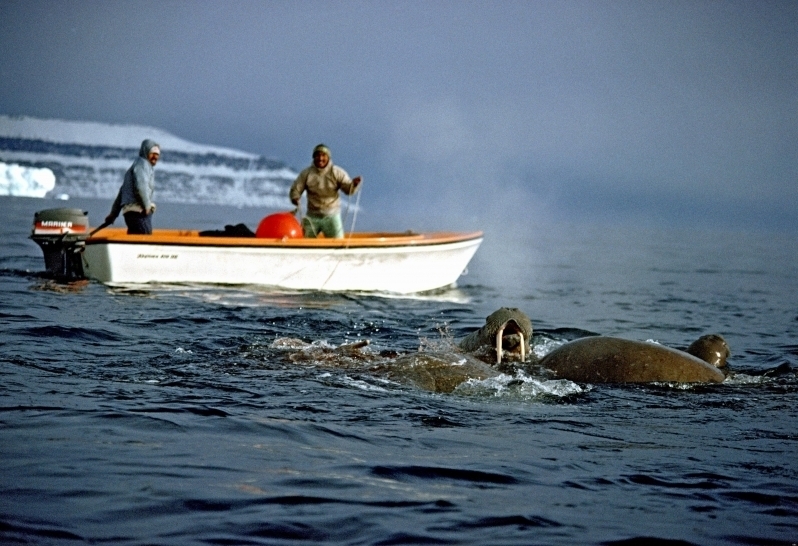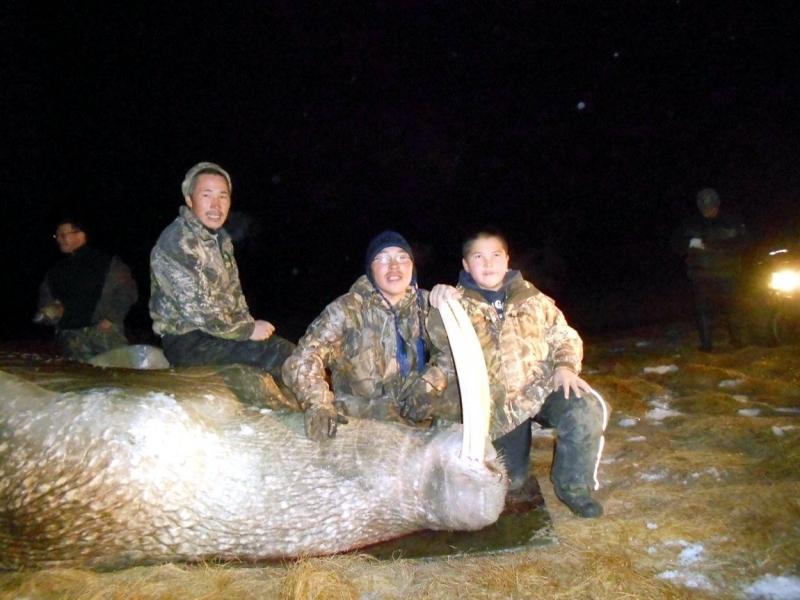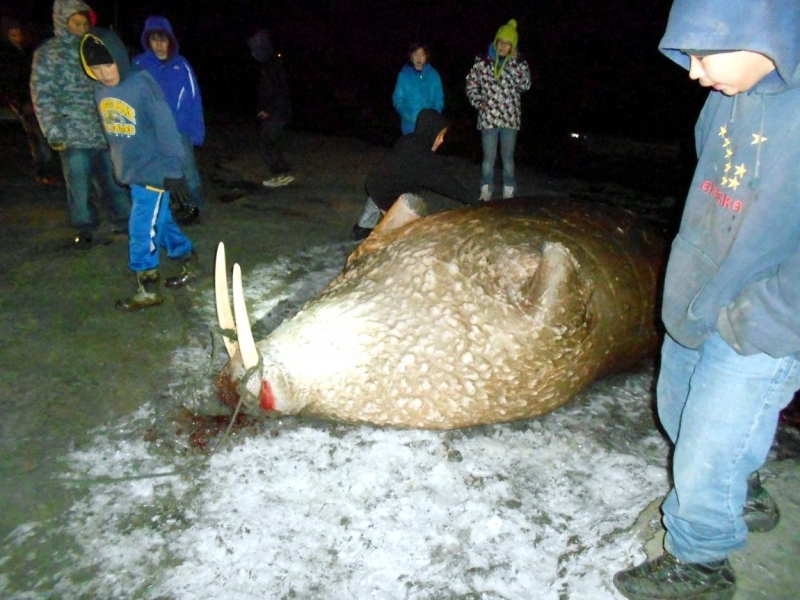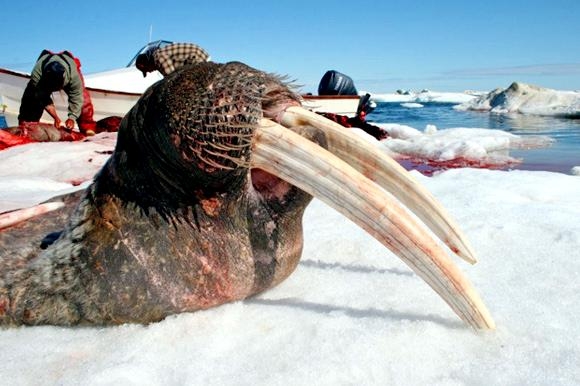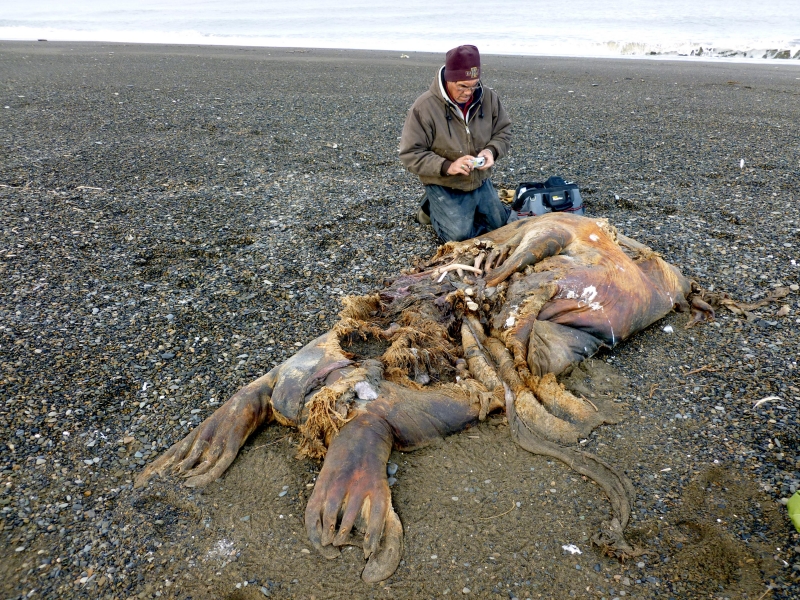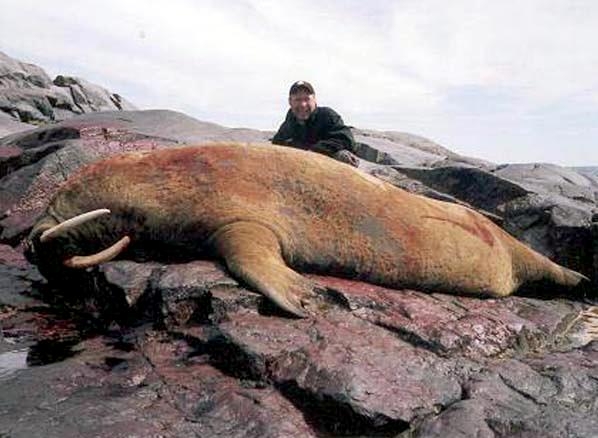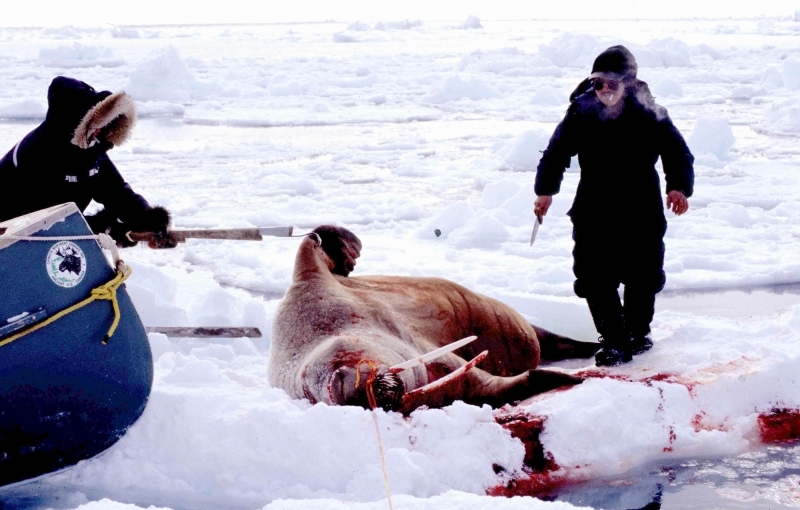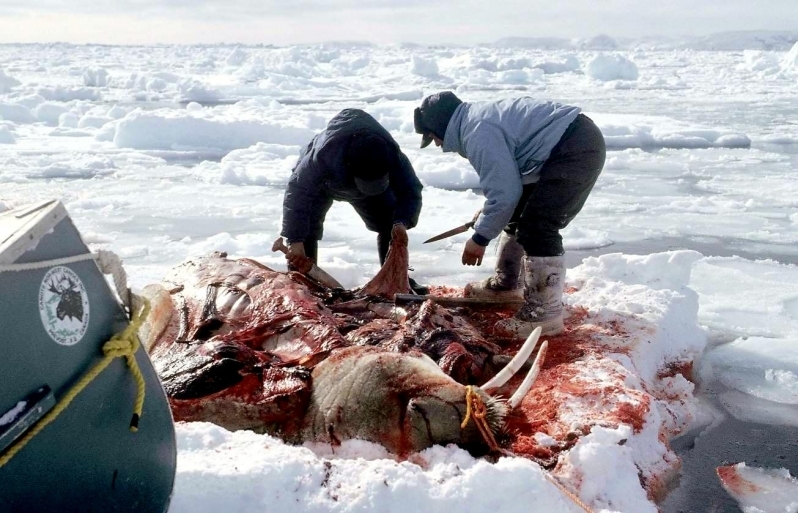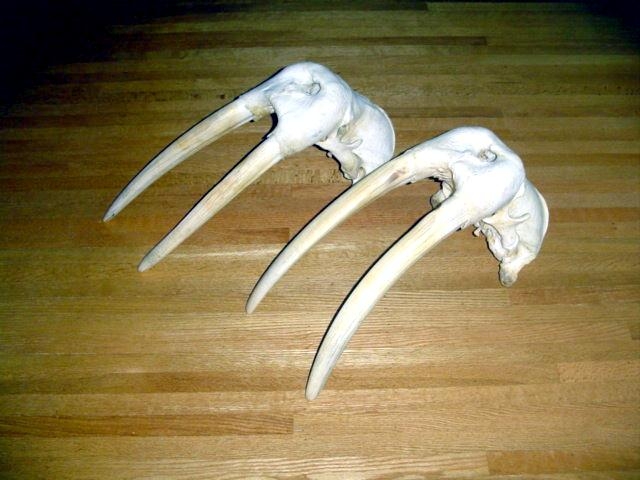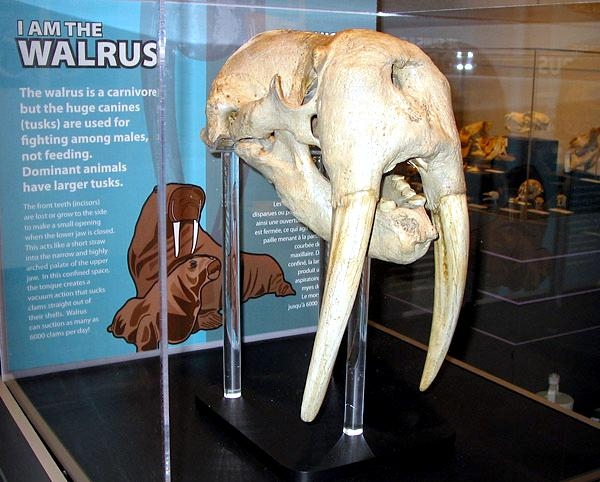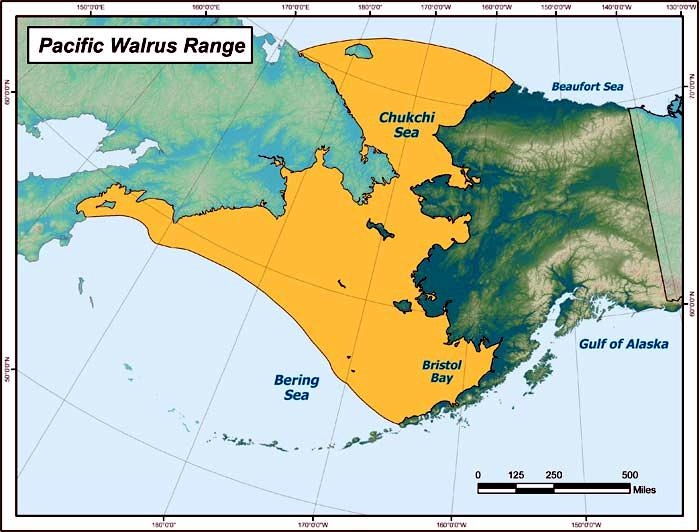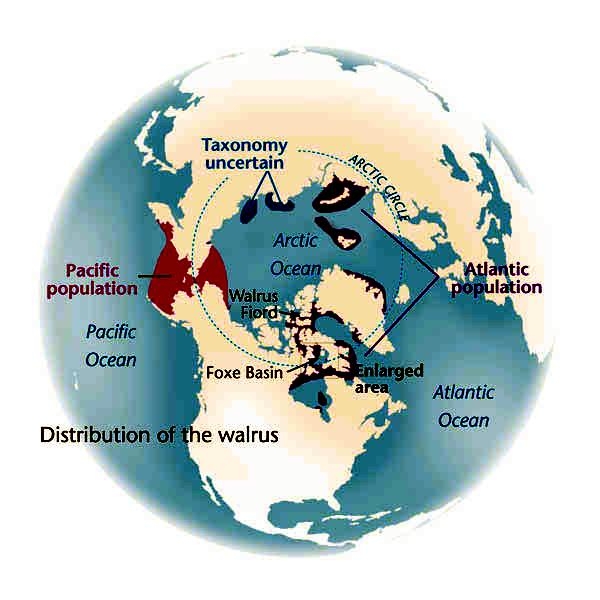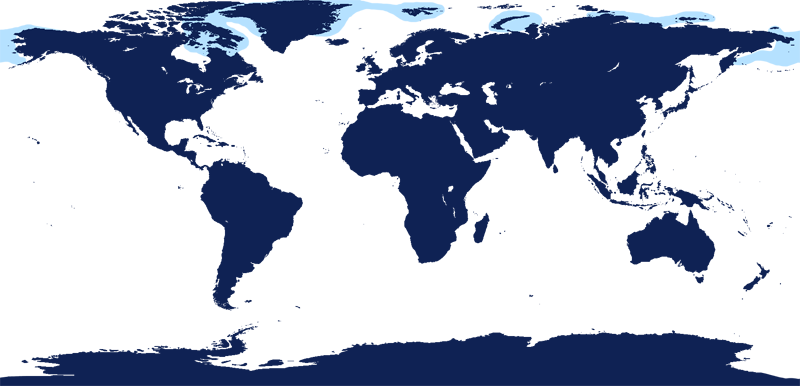“Odobenus rosmarus”
Walruses are only found in the Arctic regions of the world. Walruses inhabit areas in the Arctic that are largely made up of ice. Walruses prefer areas with shallow water so they can easily access food. This slow-moving marine mammal spends the majority of its time in or around water. The origin of the word Walrus is thought by to derive from a Germanic language and it has been attributed largely to either the Dutch language or Old Norse. The first part derives from the Dutch word walvis meaning “whale”. The second part comes from the Old Norse word for ‘horse’ hrossvalr and is thought to have been passed in an inverted form to both Dutch and the dialects of northern Germany as walros and Walross. Females spend more time on ice opposed to the males, who spend more of their time on sand or boulder beaches. Walruses migrate north during the summer and south in the winter. The migrations ensure that the Walruses can be where the most optimal ice is found. Optimal is defined as relatively thin ice but thick enough to hold the enormous weight of their bodies. Walruses are one of the largest pinnipeds. The Pacific Walrus tend to have a larger body mass than the Atlantic Walrus. This animal is known for their massive tusks, which are really just enlarged canine teeth. These tusks can break through 20 centimeters of ice. They also assist Walruses in climbing out of the water and onto the ice. The tusks can be used for the Walruses to defend themselves from larger predators and are also a way to establish dominance hierarchy among Walruses. Tusks can grow to a length of 90 centimeters but the average size is roughly 50 centimeters. Walruses have thick skin that ranges from a light gray to a yellowish brown color. Walrus pups skin color differs from the adult because they are usually solid grey, while adults can range in colors. The skin thickness varies across the body but is usually 2 to 4 centimeters thick. The layer of blubber underneath the skin can be as thick as 25.4 centimeters. Walruses have short fur in most areas of their bodies except their appendages. Walruses have whiskers to help them feel around on the ocean floor. They have relatively small eyes because they rely mainly on sense of touch to find food. They have short front flippers not only to swim but also to assist them on land. It uses its hind flippers as a motor to move its large body through the waters with the help of the front flippers to navigate which direction it will go in. Male have greater mass than females, weighing up to 1,200-1,500 kilograms and can be as long as 320 centimeters. Females of the same age can weigh 600-850 kilograms and grow to a length of 270 centimeters. Males also have longer & thicker tusks than females and thicker skin as well. Walruses are polygamous, meaning that a single male usually mates with many females.
Males have many mating calls & noises they make to attract females during mating season and in order to mark their territory. Underwater, the males make bell whistling noises and thumping noises to get the attention of females. These noises not only attract females, but also serve as a warning to other male Walruses. These noises are meant to intimidate other Walruses. When it comes to mating, usually the strongest, largest and oldest of the males get to mate with the females. Tusk fights occur between males over who gets to mate with a group of females either on land or in water. Sometimes these fights can be very gruesome and even fatal. Females sexually mature between the ages of 5-7. Males sexually mature around ages 7-10 but don’t mate until they are approximately 15 years old, when they are socially mature. During the winter & summer, both male and female Walruses gather in the thousands to breed. Both sexes congregate in their haul-out sites which are rocky or sandy beaches to pick potential mates. However, mating is believed to take place in the water. Walruses produce offspring most of their lives. Females produce a single calf every 3 years. The average gestation period for a female Walrus is 15 months, which includes a 4-5 month delay in the egg implantation. Because Walruses breed between January and April, the baby Walruses will be born the next year between April and June. The average weight of a Walrus pup is about 60 kilograms with a length of 120 centimeters. When the calves are born, they immediately know how to swim. This along with the mother’s protection, decreases the chance for predation. Before the calves are weaned, they live with the herd of female Walruses. They are very dependent on their mothers for the first few years. At age 2, they learn to scavenge for their own food and by age 3, they are completely weaned. At this time, male Walruses join the male herd and females stay in the female group but are independent from their mothers. Females care for their pups until the pups reach 3 years of age. Males have no part in raising their young. The average lifespan for walruses is between 30 to 40 years in the wild. They have a high survival rate as calves due to the protection by the females. Lower life spans may be a result of poachers & hunters. In captivity, Walruses have been recorded to live up to age 30. However, ingesting objects that are not meant for eating & tusk infection could prevent a long lifespan in captivity. In artificial surroundings, the behavior between mothers & calves may cause problems such as malnutrition. Walruses live in a hierarchical system based on age, body size and tusk length. The older & stronger the Walrus, the higher up it will be in the hierarchy.
The male Walruses establish dominance and compete for females by fighting with their tusks. The tusk fighting takes place at haul-out sites, which are usually rocky or sandy beaches near the water. They go to these haul-out sites to rest & sleep. Walruses can move the fastest while in the water. Walruses are social and spend most of their time with other Walruses of the same-sex. Females stay in one herd, while males stay in another herd until breeding time. Sometimes the packs can range from hundreds to thousands. In the winter & summer, male and females come together in large groups and get very close to each other sometimes even piling on top of each other. Walruses have small eyes that are adapted to the cold environment. Some fat cells are in place to help keep the eyes warm. Some studies indicate that Walruses can see in color, but the range of the color spectrum is unknown. Walruses has short-range vision and often cannot see when they are on the ocean floor scavenging for food. The whiskers also called vibrissae, are used for feeling their way around the ocean floor. Walruses use their whiskers to help identify food or any other small objects. They can hear relatively well on land but under water, they use a system of tissue conduction to hear. This system closes their auditory meatus and only allows them to hear through their outer ear tube. Walruses are vocal mammals. They communicate during mating season, when they have mother & calf interactions and when establishing dominance among others. Walruses have a series of grunts & barks they will use in the situations described above. The Atlantic population and the Pacific population have slightly different vocalizations. A study showed that Walruses could differentiate between the two different subspecies vocalizations. Walruses mainly feed on small invertebrates, most commonly consuming bivalve mollusks. It is unknown exactly how Walruses find them. however it is known that they use their hind fins to propel them forward, while their tusks, mouth & whiskers drag the bottom of the ocean floor in search of food. Once the Walrus has obtained a mollusk, it uses a suction method to ingest the inside after its mouth & tongue have opened the shell. Occasionally a different method is used to get shellfish open by crushing them open with their rounded teeth.
Due to their diet of small organisms, large quantities are required to sustain them. Each time a Walrus dives down to eat, they can consume up to 60 clams. Their dives for food usually last 5 to 20 minutes. Walruses can dive to depths of approximately 70 meters. Adults require 25 kilograms of small benthic organisms per day. Walruses occasionally eat bigger animals such as seals and some seabirds. Walrus predators include Killer Whales and Polar Bears. Adults use their giant tusks as a weapon to defend themselves. The young Walruses are more susceptible to predation. Humans are their main predator. Walruses forage mainly on mollusks and other benthic organisms. Sometimes parasites can get inside their intestines and the intestinal lining. In extreme cases this can cause death but usually it just causes pain, sickness and organ damage. The parasite Toxoplasma gondii, is found in Walruses and is acquired when eating bivalves. This parasite can cause Toxoplasmosis and results in death. Brucellosis causing parasites result in reproductive problems for Walruses. This can lead to stillbirths and can result in death to the parent as well. Walruses are extremely important to humans. Humans hunt them and use them for oil, ivory and their hides. Many centuries ago, the natives of Alaska, Canada and Russia hunted them for their meat & bones which were used to make tools. Population sizes of Walruses decreased greatly in the 18th century due to over-hunting. Through the years, governments from various countries have put restrictions on Walrus hunting. This has allowed the populations to rebound but they have never fully recovered. There are no known adverse effects of Walruses on humans.
